Inside Hungary’s Cuttingedge AI Research Group

Szeged, a quiet riverside university town in Hungary’s southeast is home to the ELKH-SZTE Research Group. With origins in the 1960s, it is currently a platform for cutting-edge work on the application and potential of AI. 16
Cloud Tech Takes Center Stage: BT’s Vision for Innovation
BT has reaffirmed its commitment to Hungary by opening its new office. In an exclusive interview, Joris van Oers, BT’s managing director, Global, sheds light on the company’s strategic focus on cloud technology and the talent available in Hungary. 17

Identifying the way Ahead
SOCIALITE
Art Collection
Returns to Hungary and Goes on Sale
The remarkable story of a Hungarian couple who became fine art collectors and dealers in America is coming to light as their artworks are being auctioned in a series of singleowner online events in Budapest. 22
May Inflation Data Offers Positive Surprise
The start of summer brought good news and bad. While sky-rocketing inflation finally seems to be slowing down visibly, industrial production broke a three-year negative record. 3
Continental Celebrates 3 Decades of Innovation
in Veszprém is celebrating its 30th anniversary this year. The automotive technology company’s site is now working for global markets, developing, testing and manufacturing various sensors for vehicle
and
9
Continental
safety systems, batteries
travel comfort.
NEWS
HUNGARY’S PRACTICAL BUSINESS BI-WEEKLY SINCE 1992 | WWW.BUDAPESTBUSINESSJOURNAL.COM
ICT SPECIAL REPORT INSIDE THIS ISSUE BUSINESS
HUF 2,100 | EUR 5 | USD 6 | GBP 4 VOL. 31. NUMBER 12 | JUNE 16 – JUNE 29, 2023
SPECIAL REPORT
FaceKom CEO Zsigmond Bodnár discusses the transformation of the company from fledgling startup to a leading player in Hungary’s remote client identification industry. 18
EDITOR-IN-CHIEF: Robin Marshall

EDITORIAL CONTRIBUTORS: Balázs Barabás, Zsófia Czifra, Kester Eddy, Bence Gaál, Gergely Herpai, David Holzer, Gary J. Morrell, Nicholas Pongratz.
LISTS: BBJ Research (research@bbj.hu)

NEWS AND PRESS RELEASES:
Should be submitted in English to news@bbj.hu
LAYOUT: Zsolt Pataki

PUBLISHER: Business Publishing Services Kft.


CEO: Tamás Botka
ADVERTISING: AMS Services Kft.
CEO: Balázs Román
SALES: sales@bbj.hu
CIRCULATION AND SUBSCRIPTIONS: circulation@bbj.hu
Address: Madách Trade Center
1075 Budapest, Madách Imre út 13-14, Building B, 7th floor. Telephone +36 (1) 398-0344, Fax +36 (1) 398-0345, www.bbj.hu
The Budapest Business Journal, HU ISSN 1216-7304, is published bi-weekly on Friday, registration No. 0109069462. It is distributed by HungaroPress.

Reproduction or use without permission of editorial or graphic content in any manner is prohibited. ©2017
BUSINESS MEDIA SERVICES
IN CELEBRATION OF BUDAPEST AND THE VIDÉK
There is something of a theme of celebrations and anniversaries contained within the pages of this issue of the Budapest Business Journal

For a start, the German-Hungarian Chamber of Industry and Commerce has marked the 30th anniversary of its foundation with a gala attended by 400 guests and an impressive array of VIPs, including Hungary’s President Katalin Novák, Minister of the Prime Minister’s Office Gergely Gulyás, and the Ambassadors of Hungary to Germany, Germany to Hungary, and Austria.
Chambers require companies to be present to found them, and it is no surprise that there has been a raft of firms marking three decades in Hungary in recent years. German automotive technology multinational Continental became the latest, in this case at its factory in Veszprém (where it is the largest employer in the city and the region). And the plant has not just reached a milestone in years; it has also produced its one billionth sensor in the city that lies relatively close to Lake Balaton.
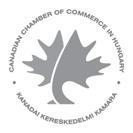
Others, too, are celebrating landmarks of one form or another. Law firm Wolf Theiss, for example, was the legal partner for the largest solar power plant yet to open in the Central and Eastern European region, over in Mezőcsát (164 km east of Budapest by road). RollsRoyce, meanwhile, has just received a tidy sum from the Hungarian Government (HUF 1.7 billion) to help its Hungarian R&D team grow and attempt to bring to market technology it has developed here in Budapest for allelectric and particularly hybrid-electric flight.
based around Szeged University, BT’s Vision for innovation and growth involving cloud tech, and interview a Stanfordeducated Hungarian whose one-time startup is a pioneer of remote client identification.
I was chatting with a business leader the other day, and the subject of Hungary’s peculiarly capital-centric nature came up. Budapest is so far ahead of the secondary cities in this country in terms of population that it has always acted like some giant Hoover, sucking in businesses and talent. The fact that Budapest is also the seat of power just amplifies that further. But as that list above suggests, significant things are also happening out in what the Hungarians call the vidék (literally the countryside, though in this context, it means everything except Budapest).
This is a process that has been accelerating in the past decade and more, with Mercedes in Kecskemét, BMW and Bosch in Debrecen, and Apollo Tires in Gyöngyöshalász (80 km northeast of the capital). And then there are what seems like any number of Asian battery or battery part makers setting up around the country. That movement to places other than Budapest is being encouraged by state incentives that hope to create the conditions for Hungarian talent to stay closer to home, especially around its countryside universities, by bringing exciting career opportunities to them.
Budapest will always be a powerful magnet: it has a history, architecture, and culture that matches anything you can find elsewhere in Europe, East or West (another point made by that business leader I mentioned earlier). But you would be wrong to ignore what is also happening in the vidék.
VISIT US ONLINE: WWW.BBJ.HU

Why Support the BBJ?
• Independence. The BBJ’s journalism is dedicated to reporting fact, not politics, and isn’t reliant on advertising from the government of the day, whoever that might be.
• Community Building. Whether it is the Budapest Business Journal itself, the Expat CEO award, the Expat CEO gala, the Top Expat CEOs in Hungary publication, or the new Expat CEO Boardroom meeting, we are serious about doing our part to bind this community together.
• Value Creation. We have a nearly 30-year history of supporting the development of diversity and sustainability in Hungary’s economy. The fact that we have been a trusted business voice for so long, indeed we were the first English-language publication when we launched back on November 9, 1992, itself has value.

• Crisis Management. We have all lived through a once-in-a-century pandemic. But we also face an existential threat through climate change and operate in a period where disruptive technologies offer threats and opportunities. Now, more than ever, factual business reporting is vital to good decision-making.
For more information visit budapestbusinessjournal.com
And all that is before you reach our Special Report, dedicated to the information and communications technology sector. Here we look at an AI research group
THEN & NOW
Robin Marshall Editor-in-chief
2 | 1 News www.bbj.hu Budapest Business Journal | June 16 – June 29, 2023
LLC with all rights reserved.
Stand
Business
aspires to be the most
newspaper
should work on
of
shareholders. We believe that
the most important
a government can make to society is improving the business and investment climate so that
citizens may realize their full potential.
What We
For: The Budapest
Journal
trusted
in Hungary. We believe that managers
behalf
their
among
contributions
its
IMPRESSUM BBJ-PARTNERS THE EDITOR SAYS
The color photo to the right shows contestants of the Miss World Hungary competition taking the stage in costumes created by Hungarian fashion designers at the event’s final, held on June 11 in Óbuda. The black and white picture from the Fortepan public archive, shows the participants of a Hungarian beauty contest held in 1989.
Photo by MTI / Tamás Vasvári
Photo by Fortepan / Károly Vimola
May Inflation Data Offers Positive Surprise
The beginning of the summer brought good news and bad. While skyrocketing inflation finally seems to be slowing down visibly, industrial production broke a threeyear negative record. The weak performance may increase the risk of an ongoing recession.
Far below expectations, inflation decreased to 21.5% in May from 24% in April, with almost all factors, bar service provider prices, contributing. Food prices rose less than expected, and fuel prices fell, while household energy prices decreased further due to lower consumption.
Durable consumer goods prices fell due to the strengthening of the forint and the reduction in the costs of manufactured goods, while the prices of alcoholic beverages rose less than expected. However, the growth in the price of services continued to exceed expectations.
In the case of food prices, the increase in the cost of seasonal foods was offset by increasingly widespread price reductions, which may continue in the coming months due to the decrease in raw material prices and production costs.
The easing of inflationary pressure is reflected by the fact that core inflation also decreased to
22.8%
from 24.8% in the previous month, MBH Bank head analyst Gergely Suppan says in commenting on the new data released by the Central Statistical Office (KSH) on June 8.
“In the coming months, due to base effects and price reductions announced for some food products, we expect inflation to gradually decrease and then to fall sharply from the middle of the year,” he writes in a note.
The base effects may be strengthened by the fact that international raw material, product and energy prices and transport costs have all fallen significantly, often to 2021 levels, in recent months, so the analyst does not expect any new external price shocks.
Industrial Production in Hungary, 2001-2023 (January-April)
Lower Inflation Faster?
In fact, it may even lower inflation faster than expected, and the strengthening of the forint could also accelerate the reduction of inflation, something that can already be observed in the case of consumer durables, Suppan notes.
“Due to the increasingly favorable trends and the growing downside risks, we can substantially reduce our average inflation expectation this year to below 17.5% from the previous 18.5%, while next year’s inflation will be 3.7% despite the fuel excise tax increase at the beginning of next year,” he reckons.
“Inflation processes will also strengthen our interest rate expectations at the end of the year; accordingly, the base interest rate may drop to 10.5%
by the end of the year, after it is expected that the one-day deposit rate will be tied to the base interest rate in September,” he added.
While inflation caused a positive surprise, industry suffered a bad start to the second quarter. In April, the production volume was 2.5% below the previous month’s level and declined by 8.3% on a year-on-year comparison. Based on working-dayadjusted data, production fell by 5.8%.
The sector’s weak performance increases the probability that
the Hungarian economy may shrink for the fourth consecutive quarter. The decline means industrial output has fallen below the production peak before the coronavirus crisis. Detailed data shows that out of the 13 sub-sectors of manufacturing industry, only electrical equipment manufacturing (which includes petroleum processing, electronics, and battery production) was able to increase compared to the previous month. Most sectors are characterized by a downward trend even in the longer term.

Gradual Revival
“After the expected temporary fluctuations caused by the energy crisis, we expect a gradual revival in industrial production from the middle of the year, which is due to the gradual recovery of internal demand, as well as the expected commissioning of new capacities, mainly related to battery production and the automotive industry, as well as the food industry, the chemical industry, and the defense industry,” Suppan comments.
In the medium term, the domestic economy could benefit significantly from the large-scale investments of Catl, SK Innovation, Samsung SDI, BMW, and Mercedes, as well as from the development of defense industry capacities, as a significant increase in military spending is expected in the coming years, he says.
For this year, Suppan expects a very modest growth of around 0.5% in industrial production but believes industrial production may significantly increase from
2024
as a result of the rising new capacities.
Another piece of bad news is the latest construction industry data: in April, according to the raw data, the volume of construction output lagged behind the previous year’s level by 3.2%. Based on seasonally and working day adjusted indices, construction output was below the March level by 2.6%.
The coronavirus crisis broke the pace of growth of the construction industry. Although it was slowly recovering from this shock, the energy crisis and the massive cuts in the state budget after the elections hindered development. The performance of the sector is constantly below its peak in 2019; in the last four years, only a few months have brought a good performance for a short time.
As this is the third quarter that the Hungarian economy has shrunk, based on the data available thus far for Q2 2023, it cannot be ruled out that the recession will extend to four quarters. Retail trade, industry and construction all fell in April compared to the previous (also not very strong) month. All of the above are increasing the risk of the ongoing recession.
www.bbj.hu Budapest Business Journal | June 16 – June 29, 2023
1News • macroscope
ZSÓFIA CZIFRA
Production volume index
Source:
Renewed Facade of Corvin Palace Unveiled for 1st Time Real Estate Matters
A Hungarian private family developer is reconstructing a classicalstyle former department store building into what it says will be a modern retail, leisure and office complex called Corvin Palace.

The building was acquired by Corvin Palace Development from the German Tengelmann Group in the early 2000s. As part of its renovation and redevelopment, the original stone facade was unveiled at a ceremony in Blaha Lujza tér in District VIII, with the green plastic netting slowly lowered to the ground amid applause to give the first uninterrupted view of the new-old frontage.
“It is neither a department store, since there will be a multitude of different stores, nor a shopping center, since most of the retail units will open to the street front. It is a mixed-use real estate property, a local plaza with an office complex,” commented Olivér Balogh, one of the owners of Corvin Palace.
The project is one of the limited number of new retail developments in the pipeline in Budapest in what is currently an uncertain market environment for the sector. What retail pipeline there is tends to be part of mixed-use complexes. At the same time, there is a development trend in the capital for the renovation and redevelopment of classic buildings into high-end office, hotel and retail complexes.
The 20,000 sqm Corvin Palace will provide
16,500 sqm of retail and office space on three levels in addition to rooftop restaurant and bar space. The retail component is scheduled to be delivered in the summer, and the 9,500 sqm office component is due to be completed in January, according to the development plans.
The total investment will be around HUF 8 billion, with the project partially self-financed and partially funded by a loan from Raiffeisen Bank.
Surprisingly Modern
“The retail spaces are nearly 100% let; even in the online age, in such a central location as Blaha is, we still see a huge demand for retail spaces,” said Balogh. “While the building was built nearly 100 years ago, it is surprisingly modern in terms of its floorplan. It allows for huge, fantastic open office spaces, which suit the needs of many companies looking for spaces right now. It has its 100-year-old charm combined with modern technology and occupierfriendly office spaces,” he added. Also speaking at the event, Budapest Mayor Gergely Karácsony emphasized the connection between the heritage of the city and urban renewal in the redevelopment of the building. The Corvin Áruház (department store), designed by the architect Zoltán Reiss, opened on March 1, 1926, and was the first building in Budapest to be equipped with an escalator.
“While the building was built nearly 100 years ago, it is surprisingly modern in terms of its floorplan. It allows for huge, fantastic open office spaces, which suit the needs of many companies looking for spaces right now. It has its 100-year-old charm combined with modern technology and occupierfriendly office spaces.”
It was severely damaged during fighting in the 1956 Revolution and was left in a derelict state until an aluminum facade was added in
1967, and it was then known as the “aluminum box.” This has been removed, with the original classic stone facade restored as a central part of the restoration of the building.
“We have installed the most up-to-date heat pump systems in the building; we have changed all the doors and windows to the most modern ones; we are installing solar panels to the roof of Corvin Palace; but I think the most sustainable feature of the building still lies in its construction: instead of demolishing the previous building, we saved all that we could, and used the least amount of materials to renovate the building, and created something that allows all the services that a cutting edge 21st-century office might need,” Balogh explained.
“There has been no environmental certification consultancy (yet) involved in the Corvin Palace project, although I strongly believe that such projects are showcasing best how sustainability could be integrated into a new project,” noted Zsombor Barta, the former president and now ambassador of the Hungarian Green Building Council.
“This includes the re-use of structures, re-use of materials, protection of architectural heritage, re-use of the entire building, revitalizing with a new and updated building the urban structure and space. Overall, this building would be a good case for sustainability accreditations as well,” Barta added.
4 | 1 News www.bbj.hu Budapest Business Journal | June 16 – June 29, 2023
GARY J. MORRELL
A biweekly look at real estate issues in Hungary and the region
Agriculture row Rumbles on as PoWs, Coaches Handed Over Roundup Crisis Ukraine
The European Commission chose to extend restrictions on the import of several agricultural products from Ukraine, including wheat, maize, rapeseed and sunflower seed, to member states Hungary, Bulgaria, Poland, Romania and Slovakia until September 15, according to an announcement on June 5, the day the restrictions had initially been set to expire.
expressing its hope that the EC would not extend the restrictions any further.
inundated with Ukrainian agricultural products due to an exemption from customs duties and quotas introduced by the EU in June 2022 to expedite deliveries to countries in the Middle East and Africa.
Alongside the extension of import restrictions on agricultural products to specific member states, the European Commission also announced the continuation of the suspension of customs duties and quotas for Ukraine for another year.
for European Commissioner for Agriculture
Janusz Wojciechowski to expand the scope of the ban to include more agricultural products.
Additionally, the Visegrád Group’s farm chambers proposed that Brussels offer compensation to Ukrainian farmers, if necessary, and establish a fund to support farmers in Central and Eastern Europe.
Ukraine’s Ministry of Agrarian Policy and Food responded on June 8 by saying that it considered the extension “inappropriate,” although it did welcome certain “positive aspects” of the decision.
“In particular, this is the creation of a consultative platform between Ukraine and the EU within the framework of which transit issues will be resolved.” The statement concluded with the ministry
The European Union’s executive body had introduced the measures on May 2 in response to a unilateral introduction of import restrictions by several of the member states, notably Hungary and Poland, in the weeks prior.
Domestic Safeguarding
These member states justified their bans by citing the need to safeguard domestic producers, as they claimed that their domestic markets were being
The agricultural chambers of the Visegrád Group, an alliance also known as the V4, which includes Hungary, the Czech Republic, Poland, and Slovakia, subsequently responded to the EC’s announcement. At a meeting in Rácalmás (60 km south of Budapest) on June 6, these lobbying bodies pressed for the EU to rescind the exemption for Ukrainian farm products from customs duties and quotas “as soon as possible,” according to Hungary’s National Agriculture Chamber (NAK).
Dissatisfied with the length of the extension of the ban on Ukrainian wheat, maize, rapeseed and sunflower seed to neighboring EU members, the agricultural chambers demanded it be extended until June 2024
in order to accommodate this year’s harvest. They also called
Meanwhile, in an announcement posted on his Facebook page, Deputy Prime Minister Zsolt Semjén said that Hungary had received a group of 11 Ukrainian prisoners of war from Russia on June 9. Semjén had apparently coordinated the release of the prisoners of Transcarpathian origin, a western region in Ukraine with a sizable Hungarian minority, with the Russian Orthodox Church, which had made an initial announcement regarding the release the day before.
Intriguingly, Oleg Nikolenko, a spokesman for Ukraine’s foreign ministry, said, “The Ukrainian government was not informed about the corresponding negotiations between the Hungarian and Russian sides.” He subsequently demanded that Hungary “provide detailed information about our citizens and urgently provide access to them.”
Hungary’s national coach service Volánbusz Zrt. handed over 34 intercity buses buses to waraffected regions in Ukraine at Tiszasalamon, Transcarpathia (an area of Ukraine that was part of Hungary until the end of World War I and has a large ethnic Hungarian population) on June 8. Speaking in Solomonovo, a Ukrainian village across the border from Hungary, Deputy Minister at the Ministry of Foreign Affairs and Trade Levente Magyar said Ukrainian officials had earlier signaled the need for buses in areas hit by the war. That need is more significant now because of the impact of the burst dam in the area around Kherson, he added.
Viktor Mykyta, the head of the Transcarpathian Regional Military Administration, thanked Hungary for its latest donation to Ukraine. More of the buses than originally planned will be sent to Kherson, where tens of thousands of people must be evacuated, he added. Photo by János Nemes / MTI

1 News | 5 www.bbj.hu Budapest Business Journal | June 16 – June 29, 2023
NICHOLAS PONGRATZ
MNB: Insurance, Pension and Capital Market Players Remain Stable Amid Risks
The report notes that although the sector ended 2022 with a negative return, the positive trend that started in Q4 last year continued in Q1 2023. In 2022, member contributions credited to the funded reserve increased to HUF 117 bln; however, while the risk of outflows is not expected to decrease in the short term, the rising cost of living may reduce the long-term propensity to save. Although the operating result of voluntary pension funds turned into a loss last year, the sector-level reserves are adequate.
“The pension fund sector performed well in terms of asset growth and returns in 2022, but we also see room for improvement in diversification and risk management. We encourage pension funds to invest more in alternative asset classes, such as real estate, infrastructure or private equity,” Laki told journalists.
Consolidation continued in financial intermediation and insurance intermediaries, with a reduction in the number of natural persons operating in the former market in particular. The number and value of contracts brokered increased compared with a year earlier, the prospectus said.
The MNB gave a press conference on June 12 to present its report, which covers the period from January 1-December 31, 2022 and provides an overview of the main trends, risks and challenges facing these sectors.
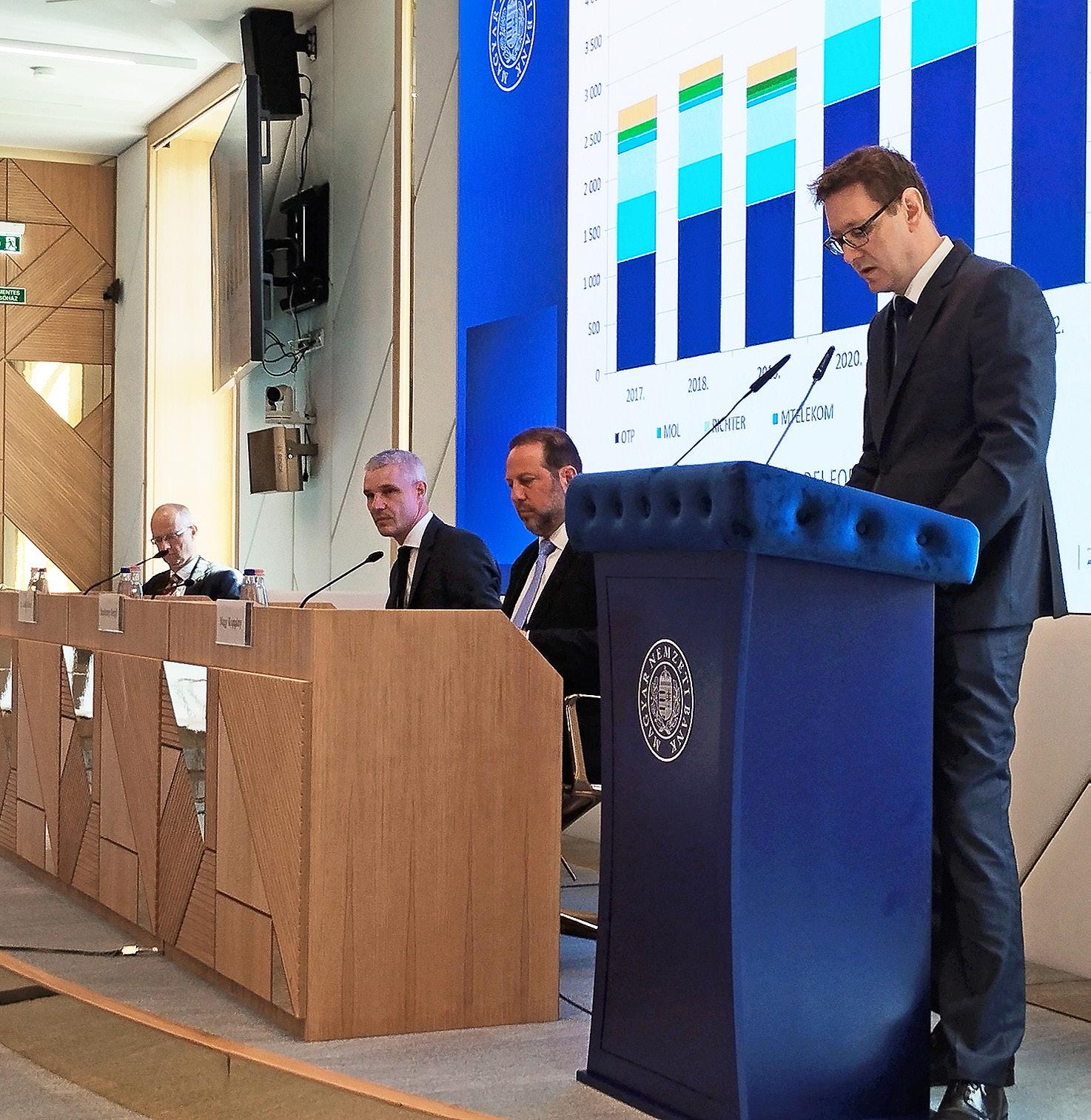
The press conference was led by Gergő Szeniczey, executive director of the MNB responsible for prudential, consumer protection and market supervision of capital markets and insurers; Gábor Laki, director of the Capital Market and Market Supervision Directorate; and Koppány Nagy, director of the Insurance and Pension Supervision Directorate. The moderator was István Binder, supervisory spokesperson of the MNB.
According to the report, the premium income of the insurance sector in 2022 grew by 7.4% to HUF 1.428 trillion, reaching
HUF 1.546 tln
if the earned premiums of branches are included. This growth was mainly due to the dynamic 12.7% increase in non-life premiums and to Casco (compulsory motor liability insurance), and household andbusiness property insurance.
Life insurance premiums, meanwhile, grew by only 1% (mainly due to the decline in single-premium products). Overall, the number of contracts grew by only 1.1%, with life insurance contracting by 1.5%, according to the report.
“The insurance sector showed strong resilience and growth in 2022, despite the pandemic-related challenges. We expect this trend to continue in 2023, as we see increasing demand for health insurance, property insurance and liability insurance products,” said Laki of the Capital Market and Market Supervision Directorate.
“Including branches, the insurance sector closed the year with a premium
income of more than HUF 1.5 trillion, and although premium income is growing dynamically, it is not keeping pace with GDP trends, falling short of the vision outlined earlier by the central bank, and penetration is declining,” added Nagy, of the Insurance and Pension Supervision Directorate.
Drought and Taxes
According to the central bank, at the end of 2022, sectoral capital adequacy stood at 172%, more than one and a half times the regulatory level. Profit after tax fell to 43% of the previous year, mainly due to the effects of drought and additional taxes, but most institutions remained profitable.
The return on equity was 9.5%, half of the previous year’s level, but a sign of stability in the sector and just below the target set by the MNB. Risks to the insurers’ business model include inflation, which is already declining this year, asset depreciation and tax changes. The claims ratio for agricultural insurance also points to risks.
The report also highlighted some of the main challenges and risks facing the insurance sector, such as the low interest rate environment, the digital transformation, climate change and cyber threats.
Szeniczey said that the MNB closely monitored these developments and took measures to ensure the stability and sustainability of the sector.
For example, he mentioned that the MNB issued a recommendation in June
2022
for insurers to apply a prudent dividend policy in light of the pandemic uncertainties.
“We advised insurers to retain their profits or use them for strengthening their capital buffers rather than distributing them to shareholders,” he said. Szeniczey added that the MNB conducted a comprehensive stress test of insurers in October 2022, which confirmed the sector could withstand severe shocks without breaching the solvency requirements.
“The stress test showed that, even under extreme scenarios, such as a prolonged pandemic, a sharp rise in interest rates or a major natural disaster, none of the insurers would fall below the minimum capital requirement,” the executive director said.
Voluntary Funds Stable
The MNB points out that, despite the risks, voluntary funds also remained stable. As a result of the depreciation of the sector’s portfolio, the balance of individual accounts in voluntary pension funds fell by more than HUF 100 bln last year to HUF 1.598 tln. This was also influenced by member payments being 31.9% higher last year than in 2021, mainly due to lump-sum pension benefits and withdrawals.
The balance sheet total of non-bank group financial companies grew by 15%
last year, with the corporate sector remaining the primary clientele. The increase in the amount due from customers in 2022 was mainly down to money lending and financial leasing, while work-out activity stagnated.
The receivables portfolio remains highly concentrated, with 15% of institutions holding 86% of total receivables. Despite an increase in equity, the sector’s ability to generate profits declined, partly due to the appearance of the extra profits taxin 2022, the MNB says.
“The capital market sector demonstrated stability and dynamism in 2022, with both investment funds and investment service providers increasing their assets and income. We welcome the growing participation of retail investors in the capital market, but we also urge them to be cautious and well-informed about the risks and opportunities,” concluded Laki.
6 | 1 News www.bbj.hu Budapest Business Journal | June 16 – June 29, 2023
GERGELY HERPAI
The National Bank of Hungary (MNB) has published its latest report on the prudential, consumer protection and market supervision of the insurance, pension and capital market sectors.
“The pension fund sector performed well in terms of asset growth and returns in 2022, but we also see room for improvement in diversification and risk management. We encourage pension funds to invest more in alternative asset classes, such as real estate, infrastructure or private equity.”
Gábor Laki, director of the Capital Market and Market Supervision Directorate, speaking at the MNB press conference.
Hungary-China Trade Relationship Soaring to new Heights Firms Told
Exporting Innovation
Hepa CEO Gábor Jenei argued that Hungary’s number one export product is innovation telling the audience an old proverb: “A Hungarian may enter a revolving door behind you, but he is going to leave in front. If only we had as many people as China, we would be a leading power,” he argued.
“Thanks to Hungary’s fair policies and excellent business environment, more and more Chinese companies are interested in investing here.
Investments already made or announced so far are worth more than EUR 18 bln, to which another EUR 8 bln-10 bln could be added in the coming year,”
BENCE
The meeting was also attended by a Chinese delegation, arriving in Hungary to sign several agreements with domestic businesses to promote and strengthen bilateral relations.
Li Xingqian, director general of the Foreign Trade Department of the Ministry of Commerce of China, noted in his speech that trade promotion events such as the Hungary-China Business Meeting are expected to help introduce high-quality products made in Hungary to the Chinese market.
He also invited Hungarian companies to participate in Chinese trade exhibitions, for example, the China International Import Expo and the China International Consumer Products Expo.
“We welcome Hungarian companies. We foresee a bright future for our cooperation,” Xingqian said.
A Bridge Between East and West
Adrienn Gőbel, the director general of the Department for Export Development from the Ministry of Foreign Affairs and Trade, followed Xingqian on the stage. She highlighted the importance of Hungarian-Chinese economic cooperation, saying, “Our country lies in the heart of Europe, acting as a bridge between the East and the West.”
She added that the current business discussions would further expand this collaboration and open new avenues for developing economic ties.
“Hungary is China’s number one trade destination in the region. It is our eighth most important trading
partner globally, with bilateral trade surpassing USD 13 billion last year, an 18% increase compared to 2020,” Gőbel told the audience.
Liu Bo, Minister-Counsellor of the Chinese Embassy in Hungary, also spoke at the event, assuring the audience that continuous efforts would
be made to enhance the economic and trade ties to benefit the people living in Hungary and China.
“Thanks to Hungary’s fair policies and excellent business environment, more and more Chinese companies are interested in investing here. Investments already made or announced so far are worth more than EUR 18 bln, to which another EUR 8 bln-10 bln could be added in the coming year,” he added.
The opening was also attended by Ernő Pető, the president of ChinaCham Hungary, who remarked that the relationship between China and Hungary has been developing dynamically, highlighting the importance of Chinese President Xi Jinping’s “One Belt, One Road” policy, and Hungary’s “Opening to the East” strategy.
He also expressed his delight that the China Brand Fair was held in person in June at the Hungexpo for the first time since the easing of coronavirusrelated restrictions.
After the speeches and the official signing ceremony, a networking event featuring nearly 100 entrepreneurs and representatives from Hungary and China offered an opportunity to discuss business opportunities and enter negotiations regarding possible trade agreements.
Foreign Minister Szijjártó Visits Battery Conference in China
Just a day after the business meeting, Hungary’s Minister of Foreign Affairs and Trade Péter Szijjártó visited the Chinese city of Yibin, where Hungary was the guest of honor at the World Power Battery Conference.
“I’d like to express my appreciation for the fact that Hungary has been invited as a guest of honor at the World Power Battery Conference.
[…] We are very happy that you have picked our country,” the minister said in a video message posted on Facebook, adding that Hungary sees China as a “strategic partner,” a country from which it can benefit a lot.
In addition, he described the Hungarian government’s “Opening

to the East,” which aims at creating mutually beneficial cooperation with countries in Asia, as a “great success story.” The policy has included incentives for Chinese investors to pick Hungary, with its investment-friendly environment and low corporate tax rate, for their bases in Europe, he said. The minister recalled that Chinese companies had formed the biggest group of foreign investors in Hungary in 2020 and are poised to retake the title this year.
In the video, he argued that Hungary had become a sort of “meeting point” for investors from the East and the West, pointing out that several Chinese battery
makers, such as Catl, and Eve Energy, picked the country as an investment destination, adding that local investments by other big EV battery makers would be announced soon.
The investments have catapulted Hungary into fourth place in battery production globally. According to the minister, the country will rise to second upon completing the planned investments.
Szijjártó thanked Chinese investors for their trust in Hungary and the Hungarian people and said the country would continue incentivizing Chinese investors to expand existing capacities or bring new factories to Hungary.
1 News | 7 www.bbj.hu Budapest Business Journal | June 16 – June 29, 2023
GAÁL
The Hungary-China Business Meeting was held on June 9 in Budapest’s Corinthia Hotel, offering companies from both countries a chance to get to know each other better and lay the groundwork for business agreements in the future.
Hungary offers China diplomatic support on many fronts. Here, Minister of Culture and Innovation János Csák speaks at the Mathias Corvinus Collegium (MCC) conference “Who Will win the Technological and Economic Race: China vs United States” in Budapest on June 5.
Photo by Lajos Soós / MTI
Business
Government Seeking to Exploit Hungary’s Geothermal Energy Potential
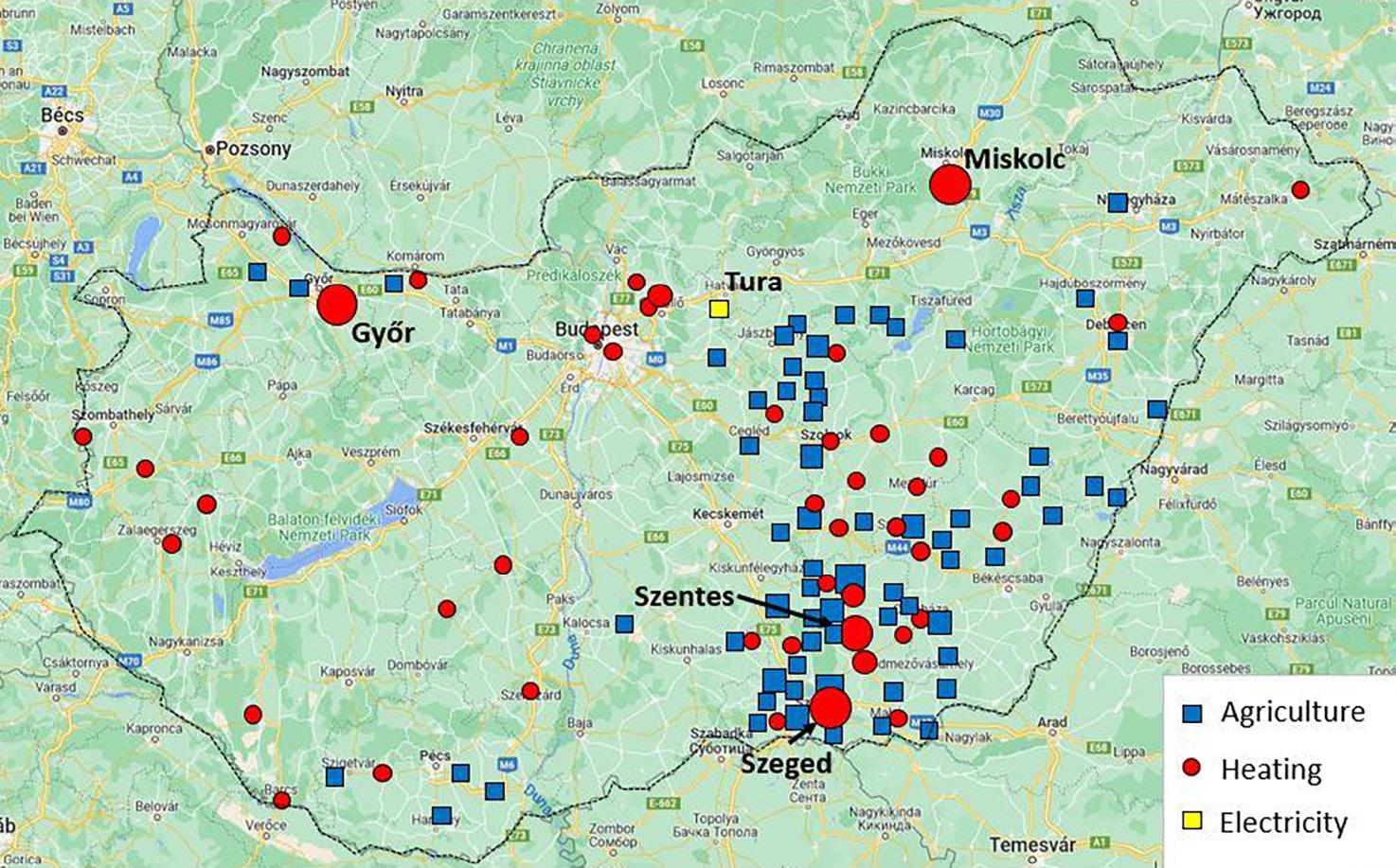
Geothermal Energy Production
Totaled 6.4 PJ in 2021
Modest Developments
Partly as a result of the cost and risks involved with more complex geothermal power generation projects, initial developments in this segment are likely to be more modest, Horváth argued.
“Here, we need some more time. There could be a technology change in the use of geothermal heat for power facilities, and for this reason, we think that in the next four-five years, there will only be a small number of investments in this field, but afterwards, in six to eight years’ time, there will be more,” he predicted.
To achieve all these goals, investors need a “calculable legal background” and, rather than direct the process itself, the government has adopted an investor-led, market-based approach, Horváth said. However, to mitigate the risks involved, particularly regarding the up-front drilling costs, investors will be offered subsidies, with some
EUR 60 mln-70 mln
expected to be budgeted for this in the next four years.
Further support for favorable loans to develop geothermal production is currently being discussed with the European Commission as part of Hungary’s projected use of the Recovery and Resilience Facility.
“We hope to mobilize between EUR 400 mln-500 mln for this purpose, so that would mean quite favorable financial conditions for geothermal investments in the coming three-four years,” Horváth revealed.
Hungary is a “superpower” in terms of its geothermal energy, but it has so far largely failed to harness its possibilities properly, Minister of Energy Csaba Lantos told the participants of Hungary’s first Geothermal Energy Summit held in Budapest on June 5.
“Only 10% of the district heating system is fueled by geothermal energy right now, and only one steam turbine is producing electricity, a very small one […] but at least it proves that we have the opportunity not only for heating, but also for producing electricity,” Lantos said in his keynote address.
But after the COVID pandemic and the war in Ukraine, the “illusion of the cheap energy age” is over, he said, and with Hungary seeking to increase its energy security through the use of renewable domestic resources, the government is keen to exploit its geothermal energy to cut gas imports and provide stable electricity generation, he underlined.
Marcell Biró, president of the Supervisory Authority for Regulatory
Affairs (SzTFH), said that the energy crisis, caused by the war in neighboring Ukraine, has been “challenging families, businesses, municipalities and public authorities all across Europe”.
All this has “confirmed that the best energy is the energy that we produce ourselves. We must make use of every opportunity to fortify our country’s self-sufficiency in energy, and to preserve Hungary’s sovereignty in the long term,” he said.
This led the government to ease the regulatory requirements governing investment in geothermal energy in March, a move which has resulted in requests for 70 geothermal exploration permits in the past three months.
“Nothing shows the popularity of the new system better,” Biró enthused.
Scope for Reduction
Based on expert studies and the clear investor interest, developments in utilizing geothermal resources for heating, if combined with improvements
The Icelandic Saga of Thrift and the Banana
Iceland is famous in the world of green energy for its thorough exploitation of the country’s geothermal energy resources. Yet, despite the abundance of heat available below ground, the frugal Icelanders employ a “waste-not, want-not” philosophy when it comes to their geothermal projects.
And that means cascading the residual heat energy available in thermal waters after the initial process of exploitation for secondary and even tertiary uses, according to Eirikur Bragason, chief operating officer of Arctic Green Energy, a renewables company headquartered in Reykjavik.
“We have almost endless examples of how we can utilize geothermal energy after it’s been used for heating or power, for example, for swimming pools or greenhouses,” he told summit attendees. It means cheap geothermal energy in Iceland enhances both energy and food security, Bragason stressed.
“If you can produce tomatoes, paprika [and other vegetables] in winter time, instead of importing it […] then you are increasing your food security. Icelanders have been doing this for many decades”, he said.
As a result, in past years, “for some time, Iceland was the largest producer of bananas in Europe,” he told his audience to surprised laughter.
to the energy performance of buildings, could reduce demand for natural gas by up to 1.5 billion cubic meters per year, that is 15% of total, he said.
Deputy State Secretary Viktor Horváth, of the Ministry of Energy, gave more context to how the government views the sector over the near- and mid-term developments. He noted that currently, some 40 municipalities in Hungary utilize geothermal energy in their district heating systems, including the cities of Szeged (175 km southeast of Budapest by road), Miskolc (187 km northeast), Győr (121 km west) and Szentes (152 km southeast), each with facilities with capacities in excess of 50MW th.
The agricultural sector is also a significant player in geothermal energy, utilizing 230 wells with a total capacity of 350MW thermal, mainly for greenhouses and heating, while Hungary’s one geothermal power unit has a capacity of 3.7MW electricity.
While these installations use just over 6
petajoules of geothermal energy annually, in total this amounts to less than 1% of the country’s total energy consumption.
However, preparations are in hand to increase this by 20%, to 8 petajoules in the coming three-to-four years, followed in a second phase to 15 petajoules, within seven to eight years.
“This means that about one-third of heat production [in Hungary] will come from geothermal energy,” Horváth said.
The energy ministry envisages that the bulk of this expansion will be in district heating facilities, in Budapest and in municipalities across the country, along with increases in industrial heating for the likes of factories and warehousing.
Aside from financial obstacles, another challenge to geothermal developments may take the form of technical limitations, not least in drilling equipment and human resources, Horváth warned.
“There is a scarcity in Hungary in drilling capacities. There are a lot of ongoing and planned projects, both in geothermal and in other fields in Hungary which are utilizing drilling capacites, so there could be some scarcity in this regard,” he said.
Raising Awareness of Geothermal’s ‘Huge Advantage’
Tamás Pazsiczky, a director and head of the Energy & Resources Consulting Team at professional services firm Deloitte, told summit attendees that geothermal, as a non-weatherdependent energy source, has a “huge advantage” compared to other renewable sources, namely photovoltaic (solar) and wind. However, geothermal is largely off peoples’ radar.
“One of the challenges is the interest of the public and the players. So, at Deloitte we have been talking to several companies and municipalities in the past year to create market [interest] and to educate these players. Unlike solar and wind, geothermal is not really in the peoples’ minds, [nor] on decision makers’ minds,” he said.
As a result, “we need to invest a lot of time and organize conferences like this, do publications and road shows, like the authority does, in order to educate the municipalities and industrial players, who can go net zero, or who can increase their sustainability agenda, by introducing geothermal. I see this as one of the key aspects [for progress],” Pazsiczky argued.
KESTER EDDY www.bbj.hu Budapest Business Journal | June 16 – June 29, 2023
2
Hungary is sitting on, but failing to properly utilize, thermal waters laying below the earth’s surface; new legislation and investment incentives are set to change this.
Continental Celebrates 3 Decades of Automotive Innovation at Veszprém
Continental in Veszprém is celebrating its 30th anniversary this year. Thanks to developments over the past decades, the automotive technology company’s site is now working for global markets, developing, testing and manufacturing various sensors for vehicle safety systems, batteries and travel comfort.
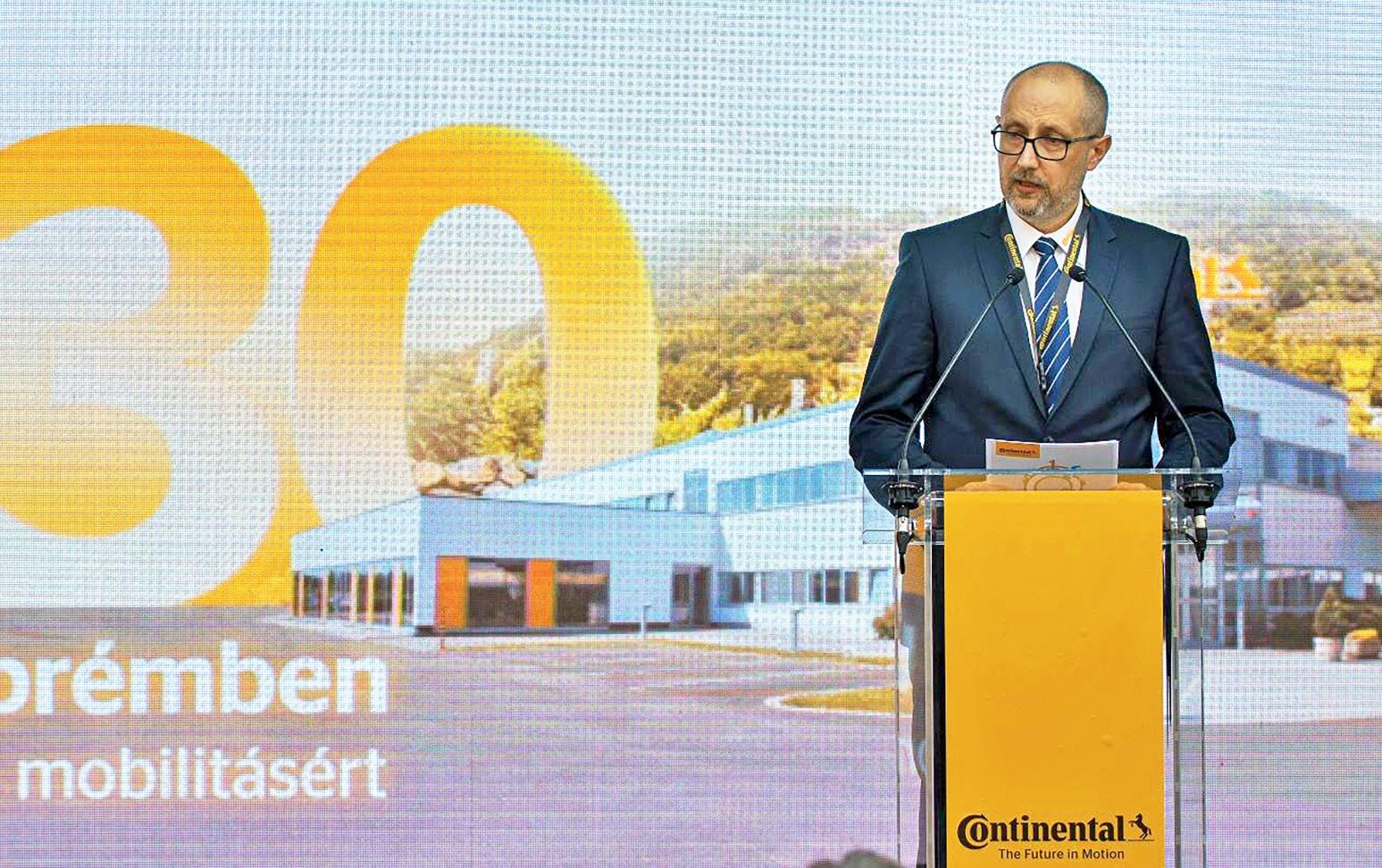
Established in June 1993, Continental Veszprém’s primary task was manufacturing wheel speed sensors, laying the foundation for advanced vehicle safety measures. These sensors offered precise braking power control by determining if a wheel was stationary or spinning, a critical aspect in an anti-lock braking system.
Over the years, Continental Veszprém has expanded, adding new production lines and buildings and a test and prototyping lab for manufacturing. On June 6, the factory announced it had reached the milestone of producing one billion sensors.

“Our Veszprém site has experienced exceptional growth over the past 30 years,” Zoltán Dapsy, managing director of the Continental factory, said at a press event there marking the occasion. “Today, we employ digitized and robotic production lines, conduct significant R&D activities, and operate a unique test track. We are a factory of high added value and stand out even ininternational comparison.”
The factory’s portfolio has grown substantially over the past three decades. In 2001, it was expanded to include a research and development center focusing on software
development, positioning itself at the forefront of automotive tech solutions.
A significant milestone was the opening of the company’s own test track in
2009,
which was substantially upgraded in 2020, adding additional features and modules. Today, it is one of Central Europe’s largest corporateowned circuits.
Global Value Chain
Veszprém contributes to the global value chain of the automotive industry, supplying products and developing solutions for nearly all car manufacturers worldwide, Continental says. It follows Industry 4.0 trends, featuring innovative facilities and automated production lines. Its development center creates the latest generation of vehicle dynamics and safety solutions. The company’s engineers have the opportunity to test their ideas and developments before they go into production, thanks to the onsite labs and the test track. In addition, the financial department there functions as a service center supporting the Budapest unit.
“As the largest employer in Veszprém and the region, our goal is to continue providing stable and sustainable jobs and enable our colleagues to contribute actively to the realization of accidentfree and sustainable transportation as soon as possible,” Dapsy highlighted.
“It’s a particular source of pride that we won the ‘Factory of the Year’ award in the large enterprise category in the year of our 30th anniversary, which is an excellent recognition of our colleagues’ talent and commitment,” he added.
Company employees, members of the local and international leadership, as well as national and local government
and economic leaders, attended the June 6 event. Other speakers included Bin Huo (head of Segment, Passive Safety and Sensorics), Kai-Uwe Walther (head of Operations, Safety and Motion), Ronan Leroy (head of Segment, Sensors and Subsystems), Gyula Porga (Mayor of Veszprém) and Péter Ovádi (the local Member of Parliament for national governing party Fidesz, and Ministerial Commissioner for the Renewal and Implementation of the National Animal Welfare Program).
Significant Milestone
The German multinational parent company Continental AG was founded in Hanover in 1871. It celebrated its 150th anniversary on October 8, 2021. In Hungary, the group is represented in all three of its business sectors: automotive, rubber, and ContiTech, which provides industrial solutions. The firm has 12 bases in Hungary in total. Last year, they employed more than
4,000 people, public records show. Continental Automotive Hungary’s revenue reached HUF 421 billion in 2022.
The 30th anniversary of operations in Veszprém marks a significant milestone for Continental, highlighting its long-standing presence and contribution to the field. The company says the event also underlines the growth of the Hungarian automotive industry. The technological advancements from the Veszprém site, indicative of broader industry progress, have helped position Hungary as an essential contributor to the global market.
“As the largest employer in Veszprém and the region, our goal is to continue providing stable and sustainable jobs and enable our colleagues to contribute actively to the realization of accidentfree and sustainable transportation as soon as possible. It’s a particular source of pride that we won the ‘Factory of the Year’ award in the large enterprise category in the year of our 30th anniversary, which is an excellent recognition of our colleagues’ talent and commitment.”
Among the latest developments at the Veszprém factory are highprecision wheel speed sensors, complex engine and transmission sensors, and advanced battery sensors that can extend the life of electric vehicle batteries.
Continental has also incorporated environmentally-friendly measures into its operations at the factory. These initiatives range from reducing waste and energy consumption to implementing new production methods that minimize environmental impact.
2 Business | 9 www.bbj.hu Budapest Business Journal | June 16 – June 29, 2023
GERGELY HERPAI
Zoltán Dapsy, managing director of the Continental Veszprém, speaks at the anniversary event on June 6.
Some of the state-of-the-art technology the factory boasts.
Dutcham Embracing the Business Benefits of Cultural Diversity
A recent NetherlandsHungarian Chamber of Commerce (Dutcham) event on the business benefits of cultural diversity, hosted by ING Bank and supported by the Dutch Embassy, covered a broad range of corporate challenges and best practices. The chamber says this topic is especially relevant for Dutcham, a vibrant business community that “melts” cultures.
“We were interested to learn how a company can benefit from encouraging an open, inclusive culture where differences are appreciated,” Dutcham said in a press release.
In her welcome, Katinka Zinnemers, managing director of Abacus Medicine and chair of Dutcham, highlighted that embracing diversity can be both rewarding and challenging and that differences can bind us.
She says she is a good example: a Dutch citizen working for a Danish company in Hungary as the sole foreigner on the team.
A diverse mindset supports profit growth and raises productivity while establishing a good working atmosphere at the same time.
The Netherlands promotes this idea in various ways, such as engaging women in male-dominated areas like industrial design, just to name an example, the ambassador said.


“In the current age of globalization and social mobility, individuals from different cities, countries, regions, ages, genders and socio-economic backgrounds converge across many social settings,” Wagner said, kicking off the discussion.
“The workplace is one such social setting, and diversity, in all its shapes and forms, becomes a characteristic part of the workforce. We aim to understand the impact of cultural diversity on our daily work-life and would also like to share good practices,” he explained.
cooperation with Refugee Talent HUB in the Netherlands was one best practice she shared. Self-awareness is essential to cope with biases, so constant communication is crucial. Hopefully, geographical borders will disappear for the new generation, and they will refer to each other simply as “my colleague,” Lasikova said.
Nikos Zois, the managing director of Heineken Hungary, said that since creativity and diversity, equity, and inclusion (DEI) are connected, it drives problem-solving and collaboration. Society is diverse and the company culture should reflect that. Cultural training is essential before starting a career abroad, but only a “cultural landing” will give the true impression.
To underline his point, he told personal experiences gained in several countries. “The enjoyment of life is a natural bond among people, so a food fair displaying national dishes can bring colleagues closer together,” he added.
Anikó Kis, diversity and inclusion officer at Abacus Medicine, said it takes a leader to foster establishing DEI within the organization, who in their case was Katinka Zinnemers, but it is now implemented in the global organization.

Dutch Ambassador Désirée Bonis said that diversity is a goal that can bring justice to the people.
Another big area is healthcare, where a workforce of diverse cultural backgrounds can help in communication with international patients.
Diversity Impact
Why does cultural diversity matter, and how does it impact innovation and performance in the workplace? This was the main topic of the keynote presentation delivered by Andrea Bujdoso, an executive coach and member of the Dutcham board.

She presented statistical data and case studies on the advantages of diverse thinking. Research shows that diverse thinking supports innovation and directly impacts company advantage and economic growth.
A panel discussion moderated by Robert Wagner, managing director of Philips Hungary and another Dutcham board member, led a lively conversation with representatives from across chamber member companies.

Krisztina Horváth, head of HR at FrieslandCampina EMEA SSC, having worked for international shared services centers over the past 20 years, has gained vast experience in this topic. She says what drives her is the vibe and the constant learning about different cultures. She argued this is something with which people in an organization can connect. It can be embedded into daily operations via community hubs and language fairs, just to name two examples.
Dutch and Danish best practices are slowly being implemented in the Hungarian operation with great success since they are successfully overcoming the frustration colleagues often have at the start.
Zsuzsanna Tóth, HR director, ING Hungary & CEE, proudly highlighted that four generations are working together at the bank. In the local management team, men and women are equally represented. The lender is working on making the CEE region more attractive to colleagues from Western countries via the STA talent exchange program.
The panelists agreed that the stronger the corporate culture is within an organization, the less diversity tension is found. Integration across multicultural teams can be complex in the face of prejudice, negative cultural stereotypes or different understandings of professional etiquette. But steps can be taken to address these challenges and turn them into drivers.
Self-awareness Essential
Sona Lasikova, head of culture and development at NN Hungary, confirmed that career development and mobility opportunities support creating a diverse pool. Their company
10 | 2 Business www.bbj.hu Budapest Business Journal | June 16 – June 29, 2023
BBJ STAFF
Dutcham is grateful to the Netherlands Embassy for supporting the event.
Anikó Kis (right), diversity and inclusion officer at Abacus Medicine, and Zsuzsanna Tóth, HR director, ING Hungary & CEE.
Andrea Bujdoso, executive coach and member of the Dutcham board.
Katinka Zinnemers, managing director of Abacus Medicine and chair of Dutcham
Robert Wagner, managing director of Philips Hungary and Dutcham board member.
Dutch Ambassador Désirée Bonis.
DUIHK 30th Anniversary Gala with President of Hungary and 400 Guests
The GermanHungarian Chamber of Industry and Commerce (DUIHK) celebrated its 30th anniversary with a gala evening on Friday at the Budapest Marriott Hotel. The 400 guests not only looked back on three decades of GermanHungarian economic relations but also enjoyed a party with dancing, bars and entertainment.


The high esteem for the work of the DUIHK over the past three decades was made clear by the guests in attendance: Hungary’s President Katalin Novák, the Minister of the Prime Minister’s Office Gergely Gulyás, the Ambassadors of Hungary, Germany and Austria (Péter Györkös, Julia Gross and Alexander Grubmayr, respectively), the Vice President of the German Chamber of Industry and Commerce (DIHK), Kirsten Schoder-Steinmüller, and the Head of Foreign Trade, Volker Treier.
President Novák emphasized in her speech that economic cooperation works when the “chemistry” is right, when good business figures are accompanied by emotional ties and when people understand, respect and accept each other.
Hungary welcomes all those looking for long-term investments in Hungary, the president said, because such companies seek to get to know the environment and Hungarians, build mutual trust, fit in, and, over time, help shape the local environment.
“In my opinion, this is how the relationship between two allied countries, between the economies of allied countries, is formed,” she said. “My thanks to you is that you believe in Hungarian-German friendship, that you believe in the ability of Hungarians and Germans to understand each other, and that you fight for it even in difficult times when more needs to be done for mutual understanding.”
DUIHK President András Sávos reminded the audience that intensive economic relations
between the two countries existed long before the DUIHK was founded in
1993.
The Budapest underground railway was planned and built by Siemens & Halse as early as 1896, a German-Hungarian Chamber of Commerce was established in Budapest for the first time in 1920, and economic contacts with West Germany did not break off even during socialism. After the change of system in 1989, all this made it possible for German companies to become intensively involved in Hungary at the beginning of the 1990s and to found the DUIHK in 1993. Today, Germany is Hungary’s most important partner, both in trade and as an investor group. But bilateral relations are also enormously important the other way round, Sávos said. Regarding German foreign trade, Hungary ranks ahead of such large economies as Sweden, Japan, Canada, and South Korea.
Mutual Trust
Looking to the future, Sávos emphasized that mutual trust is fundamentally the basis of successful cooperation. The German and Hungarian members of the DUIHK are focused on a longterm partnership. Relations between the countries have always been characterized by shared values and interests, both on the governmental and the entrepreneurial side, he said.
In her welcome address, the German Ambassador Julia Gross called the DUIHK an “expert, advisor, trouble-shooter, motivational coach, mediator, coordinator and provider of ideas” for German companies and Hungarian partners. She thanked it for the consistently excellent cooperation with the embassy.
The ambassador also welcomed the fact that the Hungarian Government, despite all the differences of opinion at the moment, is open to dialogue with businesses and with the DUIHK and that she continues to see the presence of all sectors of the German economy as a valuable asset for Hungary.
Gross referred to the current upsets in German-Hungarian relations with a comparison to making a cake: In international relations, as in baking, it depends on the ingredients and their quantity, but also the right temperature. And if necessary, the recipe must be adjusted to ensure everyone is satisfied. According to the ambassador, the EU is characterized by balancing the interests of equal but very different partners. “Together, we are undoubtedly stronger. The close integration of our economies is the best possible basis for this.”
Referring to the successes of the DUIHK over the past 30
years, the chamber’s managing director Barbara Zollmann also paid tribute to the achievements of former presidents, managing directors and staff on which it is building today. Given the manifold transformations in the world and the global economy, the DUIHK also has a vital role to play in the future. A unique feature of the chamber is its bilateralism, which also gives Hungarian companies additional opportunities in the German market.
Esteem Expected
Zollmann expressed the expectation that member companies in Hungary would be held in the same esteem in all sectors. Even in challenging times, being speechless is not an option for the DUIHK: the priority is that the willingness to talk between the countries remains and promotes positive, value-creating cooperation.
DIHK Vice President SchoderSteinmüller placed the DUIHK anniversary in the context of the German chamber network of regional IHKs, the German Chambers of Commerce Abroad (AHK) and the joint umbrella organization, the DIHK. She made it clear, as had Ambassador Gross before her, that in the DIHK’s view, the unity of the EU is indispensable for Germany and Hungary if they want to position themselves well in competition with the large economic regions of the United States or China.
“The EU should counter the worrying trend towards protectionism by expanding the internal market as well as with further ambitious trade agreements in the world,” said Schoder-Steinmüller.
With the official part of the evening completed, the 400 guests
could enjoy an entertaining party. Later, the Hungarian “mentalist” Danny Blue, who has an international reputation, amazed the audience and his “assistants,” drawn from the crowd, with tricks that were almost impossible to decipher.
In addition, guests could have memories of the evening created in virtual photo and video shoots, taste exclusive whiskies and rums in the Chill Out Room, and dance to live music with the Partyssimo Party Band and international hits with DJ Fery.
The DUIHK thanks its many sponsors of the anniversary gala and all their domestic and foreign guests for creating a memorable evening. Photos from it are available on the chamber website.
Editor’s Note: For more news from Hungary’s international business associations, please see our Chamber of Commerce Corner on page 23.
2 Business | 11 www.bbj.hu Budapest Business Journal | June 16 – June 29, 2023
BBJ STAFF
DUIHK President András Sávos (right) chats with Hungary’s President Katalin Novák. Photo by Pelsőczy / DUIHK
Guests of honor at the DUIHK 30th Anniversary Gala. Photo by Pelsőczy / DUIHK
Germany Coping with Dual Russian and Chinese Shocks
Germany’s economic miracle over the past few decades has been based on two major economic assumptions: cheap Russian energy and open access to an ever-growing Chinese market. Both premises have recently been proven wrong, thanks to the war in Ukraine and perceived Chinese threats to invade Taiwan.
Due to the loss of cheap energy and diminished trade with China, the German economic engine has been sputtering, and many have forecast it will crash. Given that Germany is the economic locomotive for Europe, particularly Central Europe, the outcome has implications beyond Germany. This article looks at each of the two economic assumptions separately and concludes that Germany has handled these strong headwinds well, better than might have been expected a year ago.
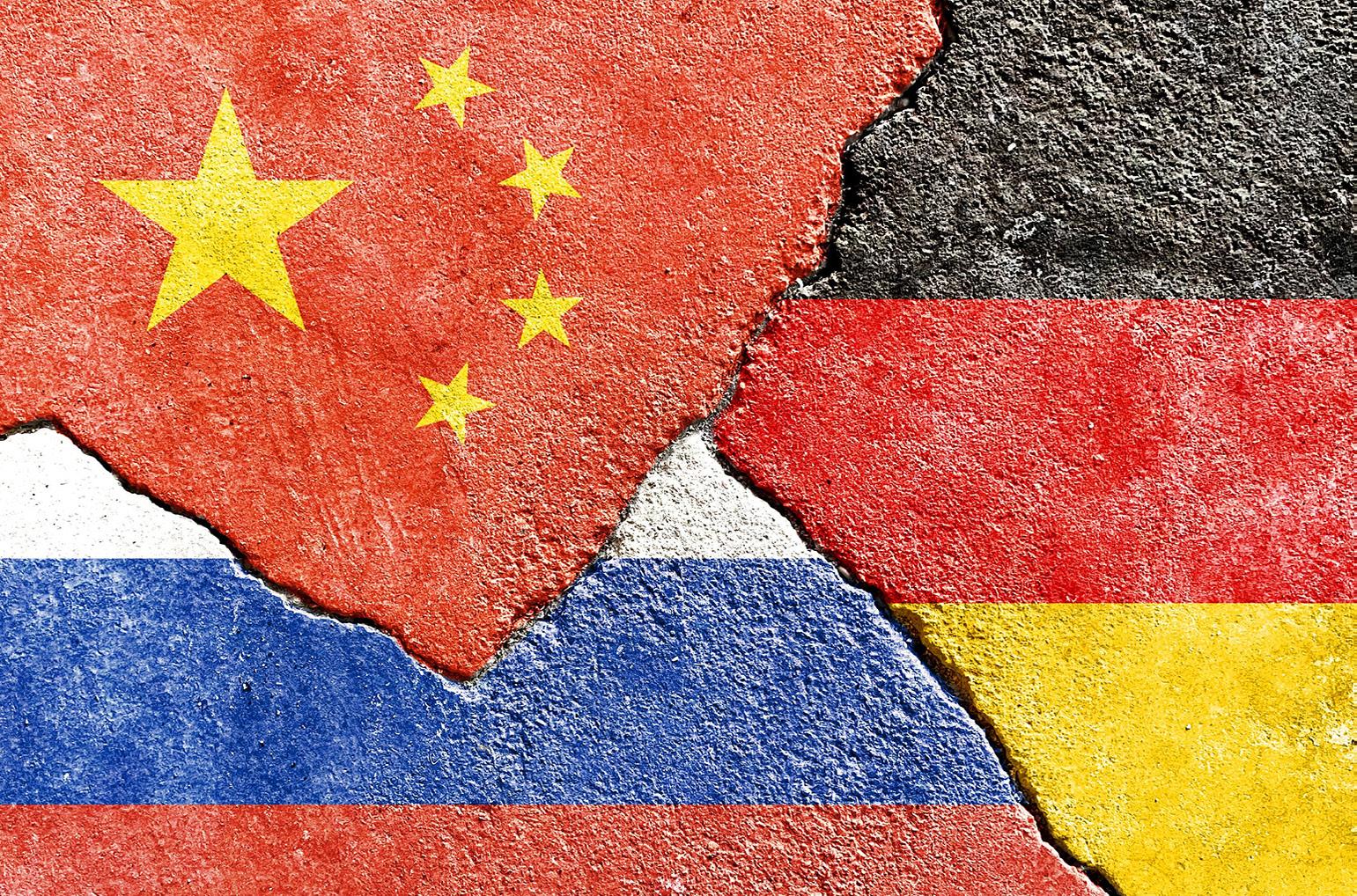
Dependence on Russian Energy
At the end of 2021, Russia supplied 55% of Germany’s gas requirements. This was reduced to 26 % by mid-2022.
Finance Matters
A biweekly look at financial issues in Hungary and the region
China. This is still open to definition; it will likely mean a host of measures, from not sharing sensitive technologies to diversifying trade relationships. Should China simultaneously experience a “lost decade” similar to the one experienced by Japan in the 1990s (which I have argued in a previous article is a distinct possibility due to excessive indebtedness, property bubbles, and the like), trade with China could decrease quite dramatically.
Germany aims to replace all energy imports from Russia by mid-2024. There is a similar trend for oil.
This turnaround is perhaps best symbolized by Germany’s construction of a liquified natural gas terminal in eight months. This is the type of grand and rapid infrastructure project one might expect of the Chinese. In Europe, eight months, under normal circumstances, would probably not even suffice for design and permitting!
The Germans also had to re-open coal-fired power plants and extend the life of some nuclear reactors. But the fact that Germany didn’t have to freeze in the dark or ration energy is remarkable. Norway replaced Russia as Germany’s largest source of gas imports.
Of course, Germany experienced double-digit energy price increases, resulting in a roughly 14% decrease in gas consumption in 2022. The German Government is also spending some EUR 65 billion to shield consumers and industries, thus limiting economic pain to a manageable level. The German chemical industry was particularly hard hit, with companies like BASF shuttering plants in Germany and building new ones abroad.
A combination of new sources (LNG, Norway), putting more reliance on existing sources (coal, uranium), and using the good old price mechanism to cut demand have proven very effective in keeping the lights on.
Dependence on Chinese Exports
China has been Germany’s largest export market for most of the past decade. Recently, the government of Chancellor Olaf Scholz declared China a strategic competitor. Germans have become very cognizant of their dependency on China (whether for exports, rare earths, or solar panels).
A report by the German Economic Institute recently stated: “The German economy is much more dependent on China than the other way round.” While 2022 saw a significant increase in German export dependency on China, the trend seems to have reversed in 2023, most likely related to geopolitical tensions over Taiwan.
In the first four months of 2023, German exports to China slipped by a further 11% (compared to the prior year), driven mostly by the Chinese perception that Germany is towing the U.S. line. This will cause stress for companies like Volkswagen, which sells more cars in China than any other non-Chinese brand. Germany is still wrestling with how to deal with China. While the German Government wants to push through a minority Chinese investment into a container port in Hamburg (deemed by the Germans a strategic asset), it is also considering screening German companies investing in China to protect the flow of sensitive technology.
‘De-risking’ Strategy
A China Strategy has been postponed until a national security review is completed. It seems inevitable, however, that the Germans (like the EU) will attempt to “de-risk” its relationship with
Germany is still wrestling with how to deal with China. While the German Government wants to push through a minority Chinese investment into a container port in Hamburg (deemed by the Germans a strategic asset), it is also considering screening German companies investing in China to protect the flow of sensitive technology.
The German economy has undergone a mild recession, with 0.5% and 0.3% contractions in Q4 2022 and Q1 2023, respectively, and has recently suffered from a higher than EU average inflation rate. According to the IMF, the German economy is forecast to shrink by 0.1% in 2023.
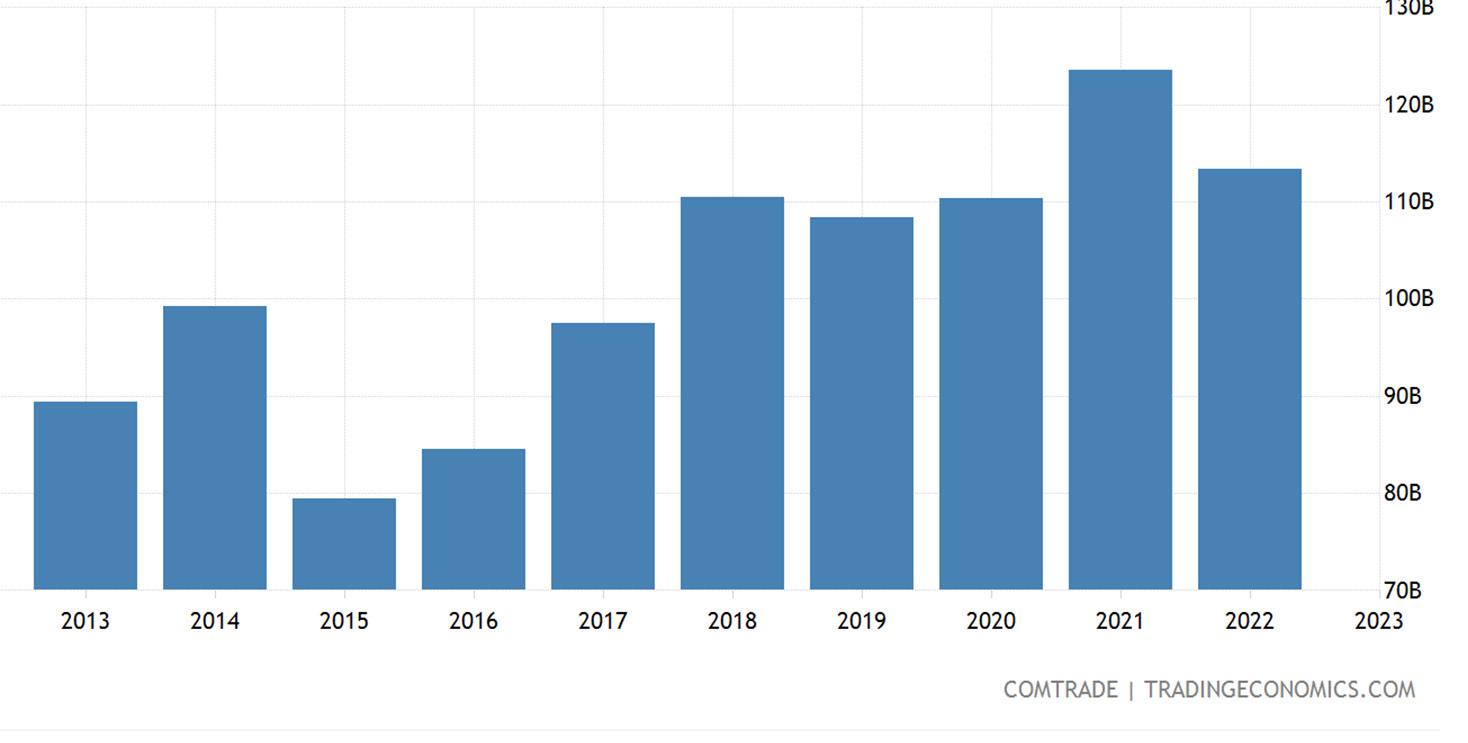
When you think about it, a mild recession is an exceptionally strong performance, given these two powerful headwinds. Reducing dependence on Russian energy and Chinese exports are both one-off structural adjustments. Once those are made, the German economy will be less vulnerable, with good potential for growth to resume.
The Germans have also set themselves the goal of becoming the most energyefficient country in the world. Thanks to their engineering prowess, this is well within their grasp and could become a pillar of long-term growth.
Les Nemethy is CEO of EuroPhoenix Financial Advisers Ltd. (www.europhoenix.com), a Central European corporate finance firm. He is a former World Banker, author of Business Exit Planning (www. businessexitplanningbook.com), and a previous president of the American Chamber of Commerce in Hungary.
12 | 2 Business www.bbj.hu Budapest Business Journal | June 16 – June 29, 2023
LES NEMETHY
Graphic by helloRuby / Shutterstock.com
German Exports to China (USD bln)
Unicum and Busatti Team Together to Brighten the Summer With Elegent Interior Textiles
Home-grown and iconic liqueur and spirit maker Zwack Unicum Nyrt. has joined forces with Toscaneria Kft., representing the Italian textile manufacturer Busatti in Hungary, to launch the summer interior design season with elegant textiles and fresh patterns.
The two companies say they have joined forces to create a unique collection that embodies their shared commitment to tradition and quality. It aims to blend the unique, Mediterranean atmosphere of Tuscany with the distinctive essence of Unicum to enhance intimate family gatherings. Moreover, the collaborative products emphasize the significance of family customs and their dedication to sustainable practices.
The partnership has resulted in a textile collection that incorporates the distinctive elements of the Unicum brand and aspires to be as diverse
as the Zwack portfolio, its creators say. The collection includes table runners, placemats, and napkin sets for the tables, while the decorative cushions provide added comfort for seating.
“We believe that it is not only centuries of history and family traditions that bind these two brands together but also a commitment to impeccable quality,” said Sándor Zwack, chairman of the board of directors and the sixth generation of his family to lead the company. “Accordingly, from the moment the idea was conceived, we knew that value would be created from the collaboration. Every glass of Unicum has a little bit of home in it, which we are now filling together with Busatti,” he added.
Zwack spent a significant portion of his early life in Italy, where his father, Péter, led the company manufacturing genuine Unicum

(the family had left a fake recipe behind when the communists forcibly took over the business in Hungary during the Rákosi era).
The family relocated to Hungary in the late
1980s
to begin working on getting back the liquor manufactory they once owned from the state. Zwack told guests at the partnership presentation that Tuscany still holds a place in his heart, and his family owns what used to be his late father’s favorite café in a small town near Firenze.
He also joked that he “should have put out a black flag in mourning” after his favorite soccer club ACF Fiorentina, the hometown team of Florence, the regional capital of Tuscany, had been defeated by London’s West Ham United in the UEFA Europe Conference League Final the night before the event.

Unique Collaboration
“Busatti has previously created textiles for world-renowned luxury clothing brands such as Armani and Prada but has never before created a styled piece,” said Mária Péntek, managing director of Toscaneria Kft. “In this unique collaboration, the respect and love of Tuscany meet Zwack, representing centuries of Hungarian tradition and culture, thus creating something new, yet lasting, as they do in everyday life,” she added.
She noted that when Toscaneria started to think about possible collaborations, they were looking for companies in Hungary with an Italian connection, making Zwack a prime candidate.

Busatti has been in the hands of the same family since 1842.
Now led by the eighth generation, the company’s store, factory and laboratory are in the same historical palace in Anghiari, Palazzo Morgalanti, which dates back to the 15th century.
“We believe that it is not only centuries of history and family traditions that bind these two brands together but also a commitment to impeccable quality. Accordingly, from the moment the idea was conceived, we knew that value would be created from the collaboration. Every glass of Unicum has a little bit of home in it, which we are now filling together with Busatti.”
After the presentation, guests were invited on a tour of the distillery’s basement, where they could sample some of the Unicum varieties from the barrel while also learning about the maturation process.
The highlight of the tour was a barrel from the 1930s, which survived the Siege of Budapest during the Second World War, when the Red Army pillaged the Zwack compound, looking for raw material to build pontoon bridges in place of the spans blown up by the retreating German army. The barrel is now used for maturing Riserva, which represents the highest end of the Unicum portfolio.
The products of the Zwack-Busatti cooperation will be available in limited quantities from mid-June 2023 at the Unicum House Boutique and the Zwack webshop.
2 Business | 13 www.bbj.hu Budapest Business Journal | June 16 – June 29, 2023
BENCE GAÁL
Mária Péntek (left) of Toscaneria Kft. Photo by Róbert Nemes
The results of the Unicum-Busatti collaboration. Photo by Róbert Nemes
Sándor Zwack of Zwack Unicum Nyrt. Photo by Róbert Nemes
Wolf Theiss Gives Legal Support to CEE's Largest Solar Power Plant
of the nearby city of Debrecen (230 km east of Budapest), home to a population of
200,000, for half a year.
Hungarian Minister of Energy Csaba Lantos, Parliamentary State Secretary András Táll of the Ministry of Finance (also the MP for the region), as well as the CEO of the Hungarian electricity system operator Mavir, András Biczók, attended the handover event, underscoring the significance of the development in Hungary’s renewable energy landscape.
The solar power plant in Mezőcsát (164 km east of Budapest by road) was officially handed over on June 6 and boasts an installed rated capacity of 250 MW, a significant milestone in the country’s transition towards clean energy. The investment was worth more than HUF 90 billion (about EUR 245 million).
The Wolf Theiss team was led by László Kenyeres, head of the projects and energy team, and Ádám Lukonits, an associate at the law firm’s Budapest office. Wolf Theiss provided comprehensive legal assistance
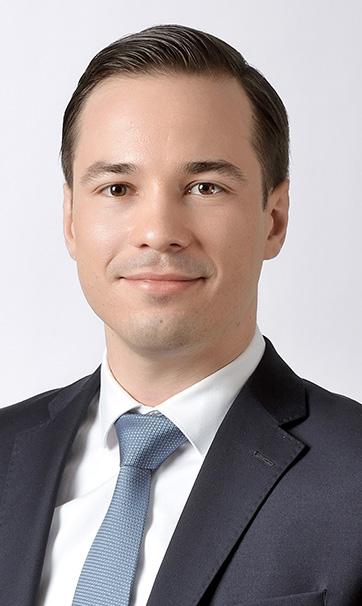
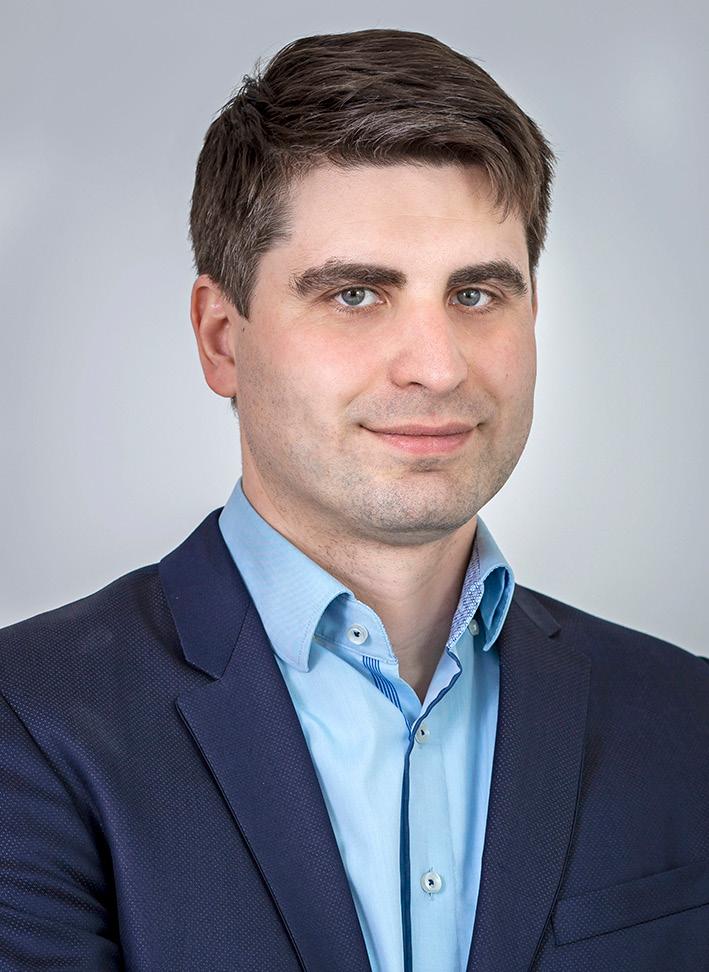
PRESENTED CONTENT
throughout the one-and-a-half-yearlong process. The team facilitated the tender process for selecting the EPC contractors, drafted and negotiated the EPC contracts, established the necessary collateral structure, and coordinated the client’s product procurement, including the largest-yet single panel purchase in Hungary. Furthermore, the team handled transportation issues, resolved disputes with EPC contractors, settled insurance claims, and conducted the tender, negotiation and signing of the operation and maintenance (O&M) contracts.
Notable Boost
The solar power plant has already undergone rigorous production tests and has been integrated into
the Hungarian electricity grid. Consequently, solar power generation and electricity export figures have already experienced a notable boost.
The Mezőcsát solar power plant accounts for 8% of the total electricity generated by solar power plants in Hungary. The new plant spans a vast area of 440 hectares, featuring 466,000 solar panels, 80 medium-voltage transformer stations and an intricate network of 1,000 km of cables. The power plant can produce 372 gigawatt hours (GWh) of electricity annually, enough clean energy to meet the energy needs
Developing the ground-breaking project was a collaborative effort involving six companies with financial backing from a combination of investor contributions and a green bond issuance, reflecting the growing trend of sustainable investment. The expected lifespan of the power plant is projected to be at least 15 years.
The same group of investors has also entrusted Wolf Theiss to oversee the development of additional solar power plants across Hungary, intending to create a further 150 MW in generation capacity.
“These additional projects are currently in the commissioning phase and further cement Wolf Theiss’ leading position as the ‘go to’ firm for energy projects in Hungary and the CEE/SEE region,” the law firm tells the Budapest Business Journal
EPR System: High Fees and Additional Administration
by-site. This, together with quarterly reporting, represents a significant additional administrative burden for them and, in many cases, will require reorganizing their internal information and record-keeping systems.
In December 2022, the Hungarian parliament adopted amendments to the law to comply with the European Union’s waste management directives. The detailed rules for implementation were published in the form of a government decree in March this year.
The new legislation is part of the EU’s measures to promote a green transition and a circular economy. The government’s priority is to ensure that this process is completed as quickly as possible in Hungary and that the national economy switches to an operating model in which fewer products become waste and the greatest possible proportion of waste is reused as raw materials.
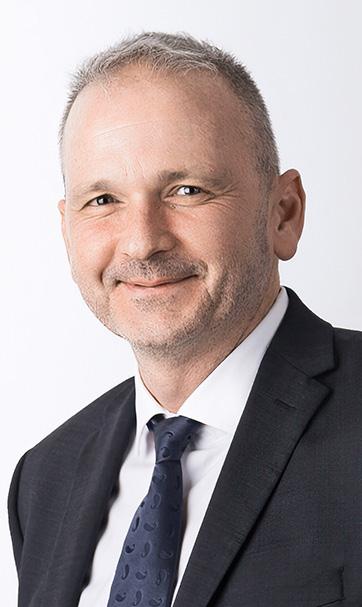
At the heart of the concept is the notion of extended producer responsibility, which means that the responsibility and cost of waste management (collection, recycling,
disposal) for the life cycle of so-called circular products falls on producers or, in the case of foreign production, on their first domestic distributors. Circular products include, among others, packaging, single-use plastic products, electrical and electronic equipment, batteries and accumulators, motor vehicles, tires, office and promotional papers, some textiles, wooden furniture, cooking oils and fats. This overlaps significantly with products subject to environmental product charges, but the overlap is not 100%.
The EPR scheme will enter into force on July 1. At the same time, the concession company for the reception, collection, transport, pretreatment, trade and transfer for treatment of waste products will start its operational activities. This role will be performed by a newly formed subsidiary of the national oil and gas giant MOL, MOHU MOL Hulladékgazdálkodási
Zrt., which, in this sense, is responsible for the operation of the EPR system.
Under the scheme, there are three primary obligations for the economic operators concerned. The first is that they must apply for registration with the national waste management authority (government offices) before starting their activities with circular products. Existing manufacturers and distributors had time to do so until May 1.
The second obligation is that businesses must keep a continuous and detailed record of their EPR activities (product codes, product movements, volumes etc.), which must be done site-
The third obligation is the so-called EPR fee, which is the basis for financing the scheme. According to the ministerial decree published on June 2, the level of this fee will be many times higher than the environmental product charge for most product groups.
It is important to note that, according to the legislation, the environmental product charge existing with similar obligations will remain in place after the EPR scheme is launched, so the product charge will no longer need to cover waste management activities. This means that the product charge payable will be reduced or, for many product groups, eliminated by allowing the deduction of the EPR fee from the product charge liability.
The regulatory wave will not stop on July 1. Six months later, from January 1, 2024, a new deposit return scheme will arrive, essentially introducing a new deposit-fee solution for drinks bottles.
14 | 2 Business www.bbj.hu Budapest Business Journal | June 16 – June 29, 2023
On July 1, radical changes will enter into force in Hungary’s waste management field. This is when the Extended Producer Responsibility (EPR) scheme will start to operate, imposing a new fee and a significant administrative burden on stakeholders for so-called circular products.
BENCE BARTA
Bence Barta, director of Andersen Tax Advisory Zrt.
Wolf Theiss acted as lead legal counsel for a group of investors in the Hungarian renewables sector represented by PolSolar Kft. The mandate encompassed the engineering, procurement, and construction (EPC) of the largest solar power plant in the CEE region.
BBJ STAFF László Kenyeres, head of the projects and energy team (left) and associate Ádám Lukonits.
Hungarian Gov’t Grants Rolls-Royce HUF 1.7 bln to Advance Electric Flight
New tax on interest income
Péter Honyek Director
However, even for the types of income mentioned in the list above, the new tax will not always apply. So the question is, what options are left for investors?
BBJ STAFF
The government says the threeyear financing program is part of the commitment to cutting-edge engineering that will positively impact the Hungarian economy. RollsRoyce Hungary is part of the global Rolls-Royce Electrical business and focuses on designing, developing and integrating innovative electrical power and propulsion systems.
the way people travel and transport goods,” said Sara Poxon, director of operations for Rolls-Royce Electrical.
“In Hungary, we have built an innovation and knowledge center based on strong engineering competencies. With the support of the Hungarian Government, we can increase our competitiveness and advance power and propulsion systems for all-electric and particularly hybrid-electric flight. This support can accelerate technological breakthroughs by RollsRoyce that will support low and zeroemission air travel by 2050,” she added.
Sustainable Aviation
Artist’s rendering of RollsRoyce Hungary technology in operation in Budapest.
Rolls-Royce Electrical has already proven technology innovations through successful demonstrator projects such as the H3PS 4-seater aircraft, powered by an integrated parallelhybrid electric powertrain designed by the Hungarian team. The business is now concentrating on developing this technology for market.
“We are delighted by this investment by the Hungarian Government that recognizes the potential of our sustainable technology solutions for the advanced air mobility market to transform

Rolls-Royce in Hungary
Based in Budapest, 120 RollsRoyce workers, primarily engineers, work on developing sustainable electrical technology for power and propulsion. Their competencies include designing, manufacturing, and testing innovative electric machines, motors, generators, inverters, controls, energy storage components and electric power distribution systems (EPDS)
Gergely György Balázs, managing director of Rolls-Royce Hungary, added, “We are focused on making aviation sustainable. Rolls-Royce Hungary has previously achieved important milestones in the development of allelectric and hybrid-electric propulsion systems, as well as innovation in power and energy distribution systems.”
He said Rolls-Royce Hungary engineers play a vital role in developing solutions that will revolutionize aviation and added that the company is committed to attracting the talent it needs to electrify flight.
“The support of the Hungarian Government is recognition of our commitment to ensuring engineering excellence and supporting the aviation industry in achieving its goal to become net zero. By working with government, industry partners and academia, we can develop the engineering solutions needed for the Advanced Air Mobility market,” he added.
and their efficient integration on subsystems and at system level for commuter aircraft, urban air transport vehicles and auxiliary power equipment. In 2021, H3PS, a unique parallel hybrid-electric craft, took the sky for the first time. The Rolls-Royce Electrical team in Hungary was responsible for the design, manufacturing, and installation of the complete electric propulsion system of the modified aircraft.
Under the new rule, the 13% social contribution tax will be payable by individuals who earn interest income. This means that instead of 15%, they will have to pay 28% tax on certain income. The types of income affected include:
• interest credited to demand deposit accounts or payment accounts,
• interest on term deposits,
• interest on publicly traded corporate bonds, foreign government securities and discount treasury bills, and profits realised on the sale or redemption of these (except for Hungarian government securities issued after June 2019),
• returns on units of public investment funds (except real estate funds) and the profits realised on the sale or redemption of units of such funds, and
• returns on investment-type insurance, if subject to personal income tax.
First, it should be noted that the new tax does not apply to the returns paid on shares or closed-end investment funds, or to the profits made on the sale of these securities, as this income does not qualify as interest income. Proceeds from the sale of bonds, units or shares onthe Hungarian or international stock exchanges are also not treated as interest income. Thus, the trading of certain investment fund units –primarily ETFs – will be exempt from the 13% social contribution tax.
A key opportunity is provided by the transitional rules. This means that the new tax will only apply to interest and returns on securities acquired from 1 July 2023. For example, investors wishing to buy German government securities or units of Dutch investment funds should do so in the next three weeks, as the income from this investment will only be subject to 15% tax, and no social contribution tax will be charged, this year or in the coming years. Moreover, this also implies that an existing portfolio would not have to be sold immediately for tax reasons, as the interest earned on the securities already held will be exempt from the 13% social contribution tax indefinitely.

The 30 June deadline is also important for investment-type life insurance and term deposits. If the life insurance policy is taken out or the deposit is made by that date, the interest income paid on the investment will be exempt from social contribution tax at any later date.
In addition, long-term investment accounts (TBSZ accounts) can also protect against the new tax burden. In the case of a TBSZ account, all gains, including interest, from investing the funds in the account are tax-exempt. The tax liability arises when investors terminate the account, i.e. withdraw funds before the term ends. In this case, all previous gains will be taxable – but the tax rate will only be 15% even if the long-term investment contract is terminated in a short while. The reason for this is that in such a case, returns on fixed deposit, and not interest income, will be assessed. Another advantage is that the personal income tax payable is reduced to 10% after three years and to 0% after five years. In this way, TBSZ accounts can not only provide personal income tax savings, but also protect against the new 13% tax burden. Interestingly, the returns on Hungarian government securities held in a TBSZ account may become taxable if the investor terminates the TBSZ account before the end of the five-year term.
Investors should therefore familiarise themselves with the details of the new tax burden, for which they have three weeks left.
2 Business | 15 www.bbj.hu Budapest Business Journal | June 16 – June 29, 2023
According to a government decree adopted last Wednesday, from 1 July 2023, interest income will be subject to a 13% social contribution tax, regardless of the amount of income. It is therefore worth considering now what investments will be affected by this new tax.
NOTE: ALL ARTICLES MARKED INSIDE VIEW ARE PAID PROMOTIONAL CONTENT FOR WHICH THE BUDAPEST BUSINESS JOURNAL DOES NOT TAKE RESPONSIBILITY
INSIDE
VIEW
PwC Hungary www.pwc.com
Rolls-Royce is being awarded HUF 1.7 billion in state funding to support research and development that will advance all-electric and hybrid-electric aviation. The grant from the Hungarian Investment Promotion Agency and Ministry of Foreign Affairs and Trade will also support the creation of 20 engineering jobs based at the R&D facility in Budapest.
3 Special Report
Inside Hungary’s Cutting-edge Artificial Intelligence Research Group
It may come as a surprise that a quiet riverside university town in Hungary’s southeast is a hotbed of artificial intelligence research. In fact, Szeged, specifically its muchheralded university, is home to the ELKH-SZTE Research Group on AI. An academic entity with its origins in the 1960s, it is currently a platform for cutting-edge work on the application and potential of artificial intelligence across a range of sectors.
Dr. Márk Jelasity, who currently heads the group of around 20 researchers, including permanent staff, associates and graduate assistants, spoke with the Budapest Business Journal from his office in the Informatics Institute, a large and elegant stone structure on Szeged’s Árpád tér, and one of the many historical university buildings in the city’s downtown.
Jelasity, who also heads the university’s AI department, characterizes the group’s three main research areas: natural language processing, image processing, and AI security problems. Work on language processing problems began in the

1990s,
primarily concerned with the idiosyncrasies of the Hungarian language and later with speech recognition. More recently, they have turned their attention to speech processing, which includes speech-to-
text applications but also more precise tools that delve into what are called paralinguistic problems.
With the help of AI, Jelasity explains, “You can detect lots of things from speech; for example, you can detect certain diseases or whether a person is drunk or not.”
Such a tool functions by picking up the generic patterns of speech specific to certain conditions of ill health, he adds. In the case of depression, this is based on a database of speech samples produced by people with and without the disorder. Thus, the tool functions for anyone without the need for individual fine-tuning.
“Such a tool, when applied to one’s phone, could be very practical because your phone hears you all the time,” he points out. “Based on what it detects from your speech, it could warn you or advise you to visit the doctor for a check-up.”
In another field, much of the group’s work has focused on image recognition tasks involving image segmentation and object detection. This line of research is relevant for developing self-driving cars, as well as medical diagnosis and computer-assisted surgery. It also has military applications such as surveillance and targeting.
Medical Research
“For us, a big thing is the medical area,” Jelasity says. “So, we work locally with hospitals, and there are several groups.
I think it’s a very big and promising area for application, which is obviously very useful. And it’s challenging, but it’s also promising.”
Among the challenges Jelasity and his colleagues face in AI-assisted medicine is resistance from some in the medical community itself.
“Some doctors fear becoming irrelevant because of AI,” he says. “And it’s a real risk because in many cases, for example, from a blood test, an AI can pick up a lot more information, like correlations. Doctors typically look at the thresholds of certain things, but there are a lot more complicated patterns. And maybe it’s not so easy to pick up for them.”
An article authored by members of Jelasity’s group on the use of machine learning to detect and segment microscopic muscle structures is currently cataloged for reference by a division of the National Institutes of Health in Washington, D.C. It is one of more than 1,000 papers
published by the group since 1981.
The same complex technology that empowers large language models (LLMs), the architecture behind ChatGPT and many of the AI systems currently in use, is also proving to be their leading shortcoming, says Jelasity.
It has also opened an important area of research for his group: AI security.
According to Jelasity, LLMs are deep neural networks consisting of many layers that analyze extensive data sets and then make predictions based on that for currently unknown data. This enables them to perform tasks such as natural-sounding conversations or pilot a drone. But when they make mistakes, it can be challenging to find out why and to correct it. What’s more, feeding them specific small data currents can be enough to mislead them wildly.
“AI systems are known to be extremely sensitive to certain input manipulations,” the professor says. “So, you can change the inputs of a system very, very slightly, in an invisible way essentially. And then, you can create an output to your liking. Basically, you can make the systems do anything you want if you have enough access to them.”
Knitted Defense
Jelasity gives the example of an Italian startup called Cap_able which has designed a line of knitted garments that it claims will protect you from facial recognition software.
“I find it very useful to think about that because, to me, these security problems are indications that something is off with the system,” he said. “These are problems that you shouldn’t have, essentially.”
Because deep neural networks, the key technology under the hood of modern AI systems, are so complex and are constantly teaching themselves, debugging them when they do fail is much more complicated than with earlier systems coded by humans. As a result, Jelasity views this concept of AI policing as an area of research with a lot of promise.
“There are lots of techniques that you can use, certain training techniques and all sorts of things to prevent this, but it’s far from being solved,” he says.
In addition to the work being done by his group on the medical, transport, and security sectors, Jelasity says other departments within the Institute of Informatics collaborate with multinational businesses in Hungary, such as Samsung, among others.
When asked how businesses seeking to harness the power of AI while avoiding its pitfalls should proceed, Jelasity is quick to give his recommendation.
“My advice, of course, would be to hire people with Ph.D.s, particularly specific to AI, because I believe that the information flow from academics into businesses is through people essentially. And the best forum is if you hire somebody who specializes in this area and has links with academia and the latest research.”
www.bbj.hu Budapest Business Journal | June 16 – June 29, 2023 ICT
JACOB DOYLE
Professor Márk Jelasity, who heads the Szeged-based ELKH-SZTE Research Group on Artificial Intelligence.
Cloud Tech Takes Center Stage: BT’s Vision for Innovation and Growth
BT, a global leader in telecommunications and digital services, has reaffirmed its commitment to Hungary by opening its new office in the Budapest One building. In an exclusive interview, Joris van Oers, BT’s managing director, Global, sheds light on the company’s strategic focus on cloud technology, the exceptional talent available in Hungary, and the firm’s ambitious plans to shape the future of telecommunications.
BBJ: BT aims to be the number one provider of secure multi-cloud connectivity for global enterprises. What role does the BT ROC [regional operations center] play in the strategy?
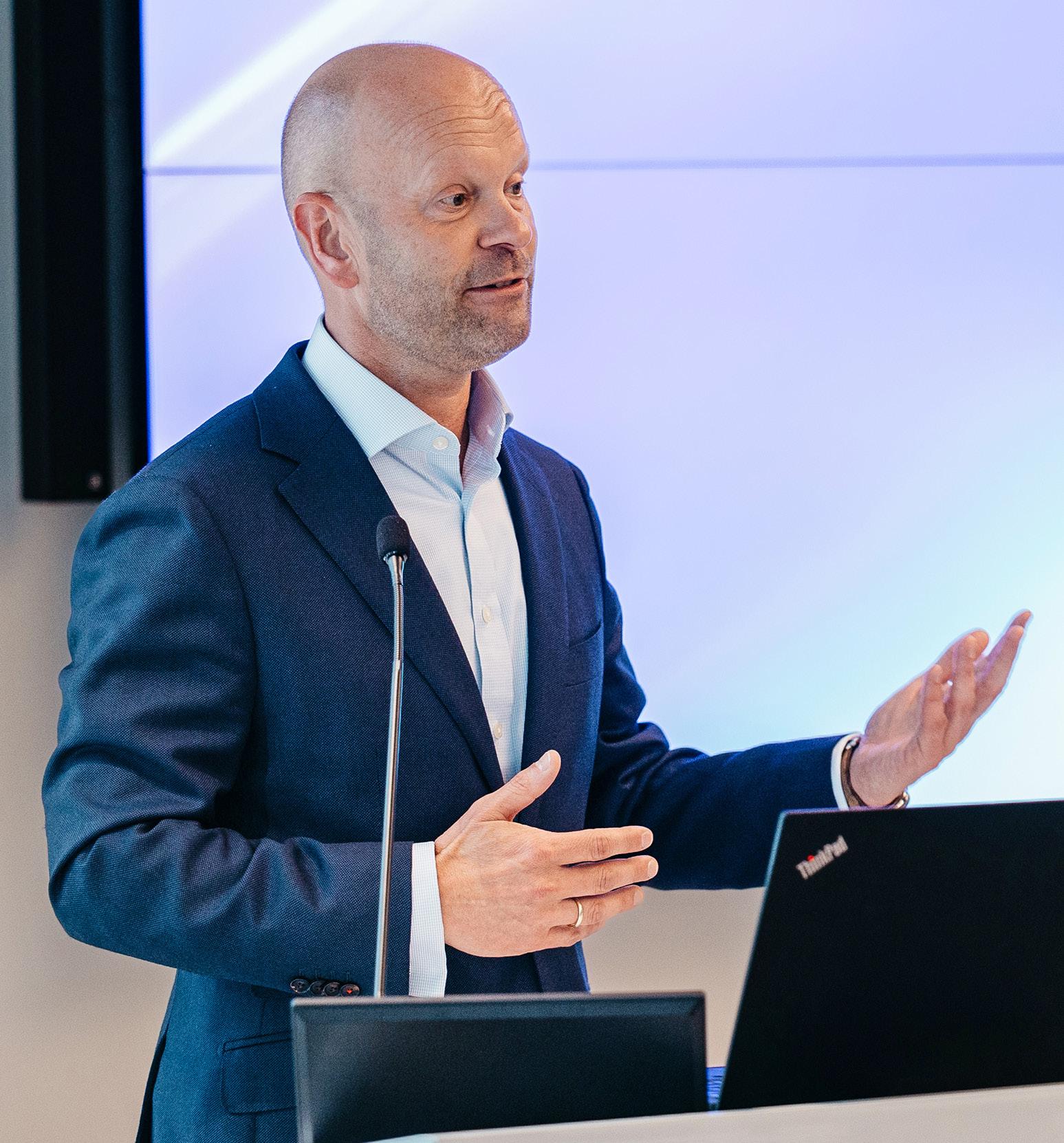
Joris van Oers: We have people in more than 70 countries serving our customers directly. The backbone of our organization is built around three regional operating centers: Hungary, India, and the United Kingdom. What is interesting here is what we call “lead to cash.” It’s the entire process of identifying opportunities, selling services, coming up with solutions and designing them, billing and cash collection. The whole “lead to cash” process is done by our 2,200 people here in Hungary. And 1,600 of them are here now, in this beautiful location. Of course, we have a broader operations infrastructure, with security operating and network operating
centers worldwide. But the three ROCs now play a pivotal role in the “lead to cash” support of the services.
BBJ: How has the working model changed in the past few years at BT? And how does the new office support this?
JvO: When we looked at our strategy a couple of years ago, we saw where we make a difference is with globally operating companies and governmental institutions. And as a result, we transformed BT’s Global unit into an organization laser-focused on that target market, providing networks, cloud and security. Recently, we announced our ambition to become the market leader in secure multi-cloud connectivity. That’s driven by all those multinational companies and international organizations that have moved to the cloud. Of course, there are multiple clouds. They see a challenge in securely connecting to the clouds and unlocking data for their end users, their own people, and their customers. We work globally because that also reflects how our customers operate. I admit that for many organizations, and also for us, COVID accelerated the way we work. We have a view that you can collaborate well in offices, and therefore we spent significant money on it. Naturally, you can also work with people outside the office globally. However, if we look at this office, the
look and feel, the technology, and the way we designed it are part of something we call the “Better Workplace Program,” which we have rolled out worldwide.
BBJ: BT recently achieved the distinction of being the second most attractive company here in Hungary. What factors do you believe contributed to this?
JvO: I think it’s a blend of what we do. The type of services that we provide makes people in general very proud. I always say that if we stop working, planes are on the ground, trucks stop driving, shops are empty, and banks cannot perform. What we do is pivotal for the critical business operations of leading brands around the world. People feel proud to work in that type of environment. Secondly, it’s culture. We are a sort of tribe. If you ask people what they appreciate about BT, it’s the family culture, the fact that we are a pretty close community and that we take care of our people. We have a lot of initiatives to bring families into the room, charity fundraising and those types of things that give a feeling of belonging. And then I think it’s the environment. If you want to be the market leader in secure multi-cloud connectivity, you need to also have a techie type of environment. I think the tools we give our people and the seamless way people can operate and do their work are pretty amazing.
BBJ: How would you characterize this Hungarian talent pool in terms of skills and capabilities?
JvO: Very high. I see how closely we collaborate with universities, the educational system, the relations we have there, and the pool of talent that we have available. Talking about “lead to cash,” we can see that all sorts of disciplines are represented here, and that’s a reflection of the good education system, but also the eagerness of people to work for us and to do their jobs the right way. In France, a couple of weeks ago, I was opening another office, and I came across two young people from Hungary who started here and are now progressing in their careers there. And that is because they’re well educated, and I also have to mention the eagerness of Hungarians to master languages, which is what we need. From a service perspective, we also have our service desk here, and this is the environment where we have the most languages available to support our global customers. You can imagine that these customers don’t speak multiple languages and just want to call us in their language. In some urgent situations, it’s very convenient that people can talk in their own language.
BBJ: What are your plans for the company’s operations here in Hungary? And how do you envision the company’s future both in Hungary and on a global scale?
JvO: From a business and strategy point of view, we believe our ambition to become that market leader in secure multi-cloud connectivity is spot on. In a lot of conversations with our customers, analysts, or the wider community of technology partners, we can see that they understand the value we can bring as a company. We see a lot of activity and engagement around transforming their networks, their security and rolling out cloud solutions to improve customer experience.
We are investing a lot in three principal areas. One is security; we continue to invest in our security capabilities worldwide, whether with people or the security operating centers in our portfolio. The second thing is we’re rolling out an entirely new stateof-the-art network that will replace our current infrastructure. It’s going to be, globally, the best network position closest to the cloud, enabling us to unlock the potential of the cloud for our customers.
The third area we invest in is people. We are convinced that people make a big difference. We are not fundamentally changing the way we operate our business. You may see the strategy on which we built the foundations of the future here in Hungary. This building, and the investment we made here, is a statement of our commitment to this market as one of the key regional operating centers in the world. As long as we can grow the business, whether with existing or new customers, there’s a promising future for our activities in Hungary to develop further.
3 Special Report | 17 www.bbj.hu Budapest Business Journal | June 16 – June 29, 2023
BENCE GAÁL
Joris van Oers, BT’s managing director, Global, speaking at the opening of its new office in Budapest One on May 31, 2023.
Meet the Stanford-educated Hungarian Pioneer of Remote Client Identification
Launched in 2017 with Hungary’s inaugural remote client identification solution, FaceKom has rapidly established itself as a market leader. The firm was the first in the region to offer financial institutions a comprehensive endto-end solution. In this exclusive interview with the Budapest Business Journal, CEO Zsigmond Bodnár discusses the transformation of the company from a fledgling startup to a leading figure in Hungary’s remote client identification industry.

BBJ: You are Hungarian, but you studied technology entrpreneurship at Stanford. Why did you decide to return to found FaceKom’s predecessor in Hungary?
Zsigmond Bodnár: For me, the Central and Eastern European region is very inspiring and, in my experience, the rapid development means that there are not only great business opportunities, but also many professional, well-trained people working here. Also, of course, it is important that I grew up in Hungary; it is my home country, and although I have been to many places in the world, I feel at home here. The past period has
proven that I made the right decision, as FaceKom has become the leading digital service provider in its field in Hungary, and we have plans for further expansion and listing on the stock exchange.
BBJ: Your digital customer ID solution is available in most leading domestic banks today. The expansion was triggered by an assignment seven years ago: what challenges did you face when you won the MKB tender for remote identification in 2016?
ZsB: When we won the tender for teleidentification at MKB Bank in 2016, we were proud to have our first major banking client, but we had only five weeks to deliver the product. Our IT manager doubted that the deadline could be met, but we worked together to solve the problem: we studied foreign models of how to develop software 24 hours a day. We finally delivered the product on time and when it went live, it worked fine. This hectic period brought experience to the company that has been put to good use ever since: delivering reliable solutions quickly and efficiently.

BBJ: The pandemic accelerated the digitization of banking. What changes has COVID brought to the customer base and product development?
ZsB: With the coronavirus outbreak, many companies suddenly needed software to manage their business remotely and conveniently. In January 2020, we had 13 customers; just six months later, we had 14 more. For example, we implemented our system in just eight days for a local utility company, which is unique in the world.
BBJ: In addition to digital customer identification, you launched hybrid customer services this year. These are essentially pre-installed rooms in various locations to which different service providers can connect. How do these FaceKom Points work?
ZsB: FaceKom Points are local, humanless customer services where you can conveniently do business on a large touchscreen. The solution can also be rented by a service provider, such as the digital kiosks of MBH Bank, which are already operating in Miskolc and Győr. It is also possible for several service providers to operate a FaceKom Point. We are convinced that this will help local branches in small towns to survive and spread.
BBJ: How is FaceKom Pont different from the other customer services and branches we have seen so far? What are the benefits for the public?
ZsB: At FaceKom Points, we have created optimal conditions for video customer identification and administration, so you can do your business here quickly and conveniently. The large touch screen and user-friendly interface make it ideal for customers who are reluctant to connect to the service from their mobile phone or home computer, or who may not have the right equipment or internet connection to do so. These points can even operate 24/7, allowing for a more flexible customer service.
BBJ: In what areas can FaceKom Point be used, for example in government, post, banking or other sectors?
ZsB: FaceKom Points can be used in many different areas. They can be equipped
with document readers, credit card terminals, scales and address printers. For example, they can be used as small, non-stop post boxes, bank branches, government offices, utility customer services, or a combination of all these.
BBJ: What competitive advantage does FaceKom Pont bring to the domestic and international market?
ZsB: Digitalization is unstoppable, but not everyone and not every process can be integrated into a remote customerservice provider relationship. FaceKom Pont is an intermediate solution: it does not require human intervention on the ground by the service provider, yet the customer feels they have arrived in the company’s “space” and is receiving attention. For brands, a secure local branch is therefore not only a communication and brand-building opportunity, but also an important means of maintaining and retaining customer relationships. And for users, it is an easily accessible, convenient and secure way of doing business.
BBJ: What are your plans for the future?
ZsB: FaceKom is the market leader in enterprise customer identification in Hungary, but our software is plug-in, and not visible to the enduser, as it runs in the background of an application. As with FaceKom Points, we want to develop in the future in areas that are closer to the customer, so we can get into direct contact with the users. We have lots of plans, and looking back at the history of FaceKom, I’m optimistic because I see that we’re not only good at dreaming, but also at delivering.
BBJ: In the spring of 2021, FaceKom was acquired by a group of investors. What impact did this have on the company’s operations and strategy?
ZsB: Our opportunities have expanded and we are able to enter the market with a more defined growth strategy. The Central European Opportunity private equity fund (CEOMP), managed by Equilor Fund Management, is playing an active role in our efforts to go public as soon as possible and become one of the largest IT companies in Hungary. CEOMP has brought valuable experience that has helped us to operate in a more structured way, which is essential for further growth.
BBJ: What advice would you give to other young entrepreneurs who want to succeed with innovative tech solutions?
ZsB: The key is to test the market before putting all your energy, money and resources into an idea, to see if there is a demand for the service or product. In most cases, even if the idea is good, it is not an opportunity because it turns out that there is no demand or it is not the right time. Timing is key. And “I think” is an expensive phrase; often very expensive.
BBJ: What does you do in your spare time?
ZsB: At the moment, I spend most of my free time with my two children, my two foster children and my pregnant wife. I don’t have time for much else!
18 | 3 Special Report www.bbj.hu Budapest Business Journal | June 16 – June 29, 2023
GERGELY HERPAI
Zsigmond Bodnár, founder and CEO of FaceKom.
A FaceKom Point digital kiosk in a MBH Bank branch in Miskolc.
ERP Companies
Ranked by net revenue from ERP software sales in 2022 (HUF mln)
Magyar Államkincstár, Szabályozott Tevékenységek Felügyeleti Hatósága, Építési és Közlekedési Minisztérium, Külgazdasági és Külügyminisztérium, Miskolc Holding Zrt., Terézvárosi Vagyonkezelő Zrt.
2000 164
(59.51), Griff Investment Kft. (40.49) –
imre sándor ferenczy István Bokor Krisztián Walter
1041 Budapest, Görgey Artúr utca 69–71. (1) 450-2200 info@griffsoft.hu 3
Info A 1998 318 –Kontron AG (100) Péter szabó Sándor Kulcsár Tímea Soós
BSS, CRM, BA (BI-EPM-DWH), EDM, SFA, FFA, Big Data, AI, e-Gov, e-Court
Garantiqa Hitelgarancia Zrt., Prímaenergia Zrt., Heineken Hungária Sörgyárak Zrt., Invitech ICT Services Kft., DIGI Távközlési és Szolgáltató Kft., Porsche Lízing és Szolgáltató Kft.
112
2040 Budaörs, Puskás Tivadar út 14. (1) 371-8000 kontron@kontron.hu
5 PRogEn méRnöki fEjlEsZtő és
Nagy Machinátor WhiskeyNet Kft., Chef Market Zrt., Premier G. cégcsoport, 77 Elektronika Kft., Piktor Kft., Szerviz-Trade Kft.
Libra11, LibraMI, Libra ReportEngine A
934 IFS Cloud ERP/EAM/ESM/FSM system
BioTechUSA Kft., Wellis Magyarország Zrt., ANY Biztonsági Nyomda Nyrt., VAJDA-PAPÍR Kft., FÉMALK Zrt., Inno-Comp Kft.
Partners Holding Kft. (A), individuals (A) –
1992 75 Progen Holding Zrt. (100) –
2006 62 Individuals (89), Volán Elektronika Zrt. (11) –
2000 26
–InfoConsulting Group (100)
Csaba Rozenberszki Judit Andráskó Zsolt Rozenberszki
sándor komáromi Gizella Koncz Szabóné Krisztina Kegye
kálmán faur ––
Csaba veréb Cecília Léber Gábor Halász
1038 Budapest, Ráby Mátyás utca 7. (1) 436-7850 info@rrsoftware.hu
1118 Budapest, Homonna utca 8/A (1) 481-9000 info@progen.hu
1113 Budapest, Karolina út 65. (1) 209-1111 info@libra.hu
1132 Budapest, Váci út 22–24. (1) 236-3700 infohu@ infoconsulting.com
QAD Enterprise Applications, Qlik Sense Agrikon-Alfa Kft., Agro Line Kft., Airvent Légtechnika Zrt., Semilab Zrt. TRM Pro Kft. Visimpex Hungary Kft.
ORACLE JD Edwards Andritz, Gyermelyi, Fornetti, Arriva, Immergas, Zalaco
2002 86 BeXt Kft. (50), QuNst Kft. (50) –
2002 A Imre Kereki (100) –
lajos beck, istván kucsera Zoltán Horváth Lajos Beck
imre kereki ––
1148
1134 Budapest, Kassák Lajos utca 19–25. (1) 555-7270 info@isys-on.hu 9 E-bEst
document and workflow
Abroncs Kereskedőház Kft., Kall Ingredients Kft., Balatoni Hajózási Zrt., RSM Zrt., TV2 group
3 Special Report | 19 www.bbj.hu Budapest Business Journal | June 16 – June 29, 2023
Rank ComPany WEbsitE nE t RE v E nu E f R om ERP soft W a RE sal E s in 2022 (H uf mln) t otal n E t RE v E nu E in 2022 (H uf mln) softWaRE tyPEs DistRibutED in 2022 majoR CliEnts in 2022 yE a R E stablis HED n o. of full-tim E E m P loy EE s on m ay 1, 2023 oWnERsHiP (%) HungaRian non-HungaRian toP loCal ExECutivE Cfo maRkEting DiRECtoR aDDREss PHonE Email 1 tECHWavE HungaRy ZRt. www.techwave.hu 3,829 3,829 SAP A 1999 79 –Techwave Consulting Inc. (100) Péter fárizs ––1138 Budapest, Dunavirág utca 2–6. (1) 237-1730 info@techwave.hu 2 gRiffsoft infoRmatikai ZRt. www.griffsoft.hu 3,574 3,574 Forrás Integrated Case Management System, SmartBrick Asset and Facilities Management System
Other
kft. www.kontron.hu 3,054 32,000
kontRon HungaRy
SAP,
softWaRE ZRt. www.rrsoftware.hu 2,131 3,342 ERP,
4 R&R
1997
R&R
sZolgáltató kft. www.progen.hu 1,566 1,762 sERPa,
6 libRa
ZRt. www.libra.hu 1,468 1,484 Libra3s,
sZoftvER
7 infoConsulting HungaRy kft. www.infoconsulting.com/hu 934
www.isys-on.hu 572 1,657
8 isys-on infoRmatikai tanáCsaDó kft.
kft. www.ebest.hu 489 489 ORACLE,
tanáCsaDó
Budapest, Nagy Lajos király útja 24. (30) 927-7255 ebest@ebest.hu NR 4ig nyRt. www.4ig.hu A 70,379 A A 1995 877 (71.72) (28.28) Péter fekete Csaba Thurzó –1037 Budapest, Montevideo utca 8. (1) 270-7600 info@4ig.hu NR EPiCoR softWaRE HungaRy kft. www.epicor.com A 636 A A 1993 55 –Epicor Software Cyprus Ltd. (100) Richard john Clark, glenn stephen lambert, marian janci ––1133 Budapest, Váci út 76. (1) 452-7600 info.hungary@ epicor.com NR llP HungaRy kft. www.llpgroup.com/hu A 313 Infor SunSystems, systems@work HBO, KPMG, MUFG 1991 A –LLP Praha s.r.o (100) jiri stiller Edit Szekretár-Tóth –1124 Budapest, Németvölgyi út 114. (30) 966-9042 contact@hu.llpgroup. com NR multi infoRmatikai kft. www.multi.hu A 195 Management software family, utilities systems, asset management A 1991 6 György Marosi (50), Györgyné Marosi (50) –györgy marosi ––1196 Budapest, Fő utca 116. (1) 348-0576 info@multi.hu NR multisoft kft. www.multisoft.hu A 1,153 Microsoft Dynamics 365 Business Central A 1991 73 Gábor Kelemen, Judit Gyenes Kelemenné (100) –gábor kelemen ––1115 Budapest, Bartók Béla út 105–113. (20) 330-0220 sales@multisoft.hu NR ntt Data businEss solutions kft. https://hello.global.ntt A 3,305 A A 2001 77 –NTT DATA Business Solutions International Holding GmbH (100) Zsuzsanna szakács földháziné ––1117 Budapest, Neumann János utca 1. (1) 482-9500 info-solutions-hu@ nttdata.com NR oRaClE HungaRy kft. www.oracle.com A 25,936 A A 1993 240 –Oracle Nederland B.V. (100) titusz Csaba Puskár ––1112 Budapest, Balatoni út 2. (1) 224-1700 –NR REvolution softWaRE kft. www.revolution.hu A 1,913 ERP systems, case
1992 62 Individuals (100) –lászló szalóki –Norbert Somkutas 1133 Budapest, Váci út 76. (1)
NR saP HungaRy kft. www.sap.hu A 58,541 SAP A 1997 1,400 –SAP SE (100) szabolcs Pintér György Simon –1031 Budapest, Záhony utca 7. (1) 457-8333 –
management systems,
management systems
461-8030 revol@revolution.hu
Broadcasting, multimedia, WIFI services, ICT solutions, mindigTV, broadcast
Managed leased line data and internet, voice and sub-centre, WIFI-based, data centre and cloud-based, IT security and other ICT services, broadcasting
DVB-T, analogue terrestrial radio, IP VPN, microwave
1999 A
Antenna Hungária Zrt. (51), Corvinus Nemzetközi Befektetési Zrt. (49) –
1,857 Corvinus Zrt. (25) PPF Group (75)
Antenna Hungária Zrt. (100) –
4IG Nyrt. (76.78), state (23.22) –
Dodonova Zoltán Pereszlényi
lászló blénessy Csaba Thurzó Hajnalka Mester
Peter gažík József Takács Nemanja Zilovic
Tamás Tábori Sándor Gurbán –
lászló blénessy Krisztián Rathmann –
1097 Budapest, Könyves Kálmán körút 36. 1414 sajto@telekom.hu
1112 Budapest, Boldizsár utca 2. (70) 700-1270 sajto@ vodafone.com
2045 Törökbálint, Pannon út 1. (20) 930-4000 –
1134 Budapest, Váci út 35. (1) 707-0707 ugyfelszolgalat@ digi.hu
1119 Budapest, Petzvál József utca 31–33. (1) 464-2464 antennah@ ahrt.hu
✓
Antenna Hungária Zrt. (100) –
Csaba bőthe Dániel Majubu –
1013 Budapest, Krisztina körút 39. (80) 820-082 kapcsolat@ invitech.hu
7100 Szekszárd,
(100) –
János Tarr ––
20 | 3 Special Report www.bbj.hu Budapest Business Journal | June 16 – June 29, 2023 Telecom Service Providers Ranked by total net revenue in 2022 (HUF mln) Rank ComPany WebSiTe To T al ne T R evenue in 2022 (H u F mln) n o. o F a CT ive S ub SCR ibe RS SeRviCeS inFRaSTRuCTuRe TyPeS PaCkage TyPe Sold y ea R e ST abli SH ed n o. o F F ullT ime em P loyee S on m ay 1, 2023 oWneRSHiP (%) HungaRian nonHungaRian ToP loCal exeCuTive CFo maRkeTing diReCToR addReSS PHone email l andline TR an S mi SS ion m obile voi C e TR an S mi SS ion xd S l m obile in T e R ne T Cable in T e R ne T i PT v Cable T v l ea S ed line voi P Sa T elli T e T v oTH e R m obile ne TW o R k oPT i C al C able ne TW o R k a nalog W i R e ne TW o R k a nalog C able ne TW o R k i S dn oTH e R T R i P le P lay ( i n T e R ne T , T v , landline PH one) Quad R u P le P lay ( i n T e R ne T , T v , landline PH one, mobile) Com P any P a C kage S 1 magyaR Telekom nyRT www.telekom.hu 746,000 5,986,563 ✓ ✓ – ✓ ✓ ✓ ✓ – – ✓ – ✓ ✓ ✓ ✓ – – ✓ ✓ ✓ 1991 5,393 Free float (34.33), own shares (4.28) Deutsche Telekom Europe B.V. (59.21) Tibor Rékasi Daria
zRT
288,714(1) A ✓ ✓ ✓ ✓ ✓ ✓ ✓ ✓ ✓ – – ✓ ✓ ✓ ✓ ✓ – ✓ ✓ ✓
2 vodaFone magyaRoRSzág
www.vodafone.hu
3 yeTTel magyaRoRSzág zRT www.yettel.hu 217,488 3,336,677 ✓ ✓ – ✓ – – – ✓ – –technology free TV service ✓ – – – – – ✓ – ✓
1993
4 digi TávközléSi éS SzolgálTaTó kFT www.digi.hu 78,901 A ✓ ✓ ✓ ✓ ✓ ✓ ✓ ✓ ✓ ✓ – ✓ ✓ ✓ ✓ ✓ Microwave ✓ ✓ ✓
2004 1,961
5 anTenna HungáRia zRT www.ahrt.hu 46,891 A ✓ – – – – – – ✓ – –
– ✓ – – –
– – –
1992 424
6 inviTeCH iCT SeRviCeS kFT www.invitech.hu 31,748 A ✓ – ✓ – ✓ – – ✓ ✓ –
– – ✓ – – – ✓ 2016 619
–
7 TaRR kFT www.tarr.hu 11,849 (2021) A ✓ ✓ – ✓ ✓ – ✓ ✓ ✓ – – – ✓ ✓ – – – ✓ ✓ ✓ 1990 334
Individuals
Kadarka utca 18. (74) 416-000 info@tarr.hu 8 HungaRo digiTel kFT www.hdt.hu 6,233 A – – – – – – – – – –Satellite data transmission, satellite broadcasting, WiFi central infrastructure – – – – – Satellite – – ✓ 1990 41 Portuguese Telecommunication Investment Kft. (75), Antenna Hungária Zrt. (25) –Péter krisztián Fekete, gyöngyvér Papp-gerlei, istván Sárhegyi, lászló blénessy Éva Illés Csíkné Sándor Molnár 2310 Szigetszentmiklós-Lakihegy, Komp utca 2. (1) 488-8500 info@hdt.hu 9 neTFone TeleCom kFT www.netfone.hu 2,441 (2021) A ✓ ✓ ✓ ✓ ✓ – – ✓ ✓ – – – – – – – – – – –2012 56 Datamachine Kft., István Kun (100) –istván kun, lászló mészáros ––8900 Zalaegerszeg, Nefeljcs utca 2/A (1) 878-1800 info@netfone.hu 10 aCe TeleCom kFT www.acetelecom.hu 2,139 A ✓ – – – – – – ✓ ✓ –Data centre solutions; virtual and physical sub-directories – ✓ – – –Microwave network – – ✓ 1997 A Individuals (68), ThreeF Kft. (32) –attila Farmosi, gábor varga Gábor Varga Péter Németh 1037 Budapest, Zay utca 3. (1) 999-1000 office@ acetelecom.hu 11 oPenneTWoRkS kFT www.opennetworks.hu 402 A – – ✓ – – – – ✓ ✓ –Virtual switchboard, call centre, Teams gateway – – – – – – – – ✓ 2004 18 András Beliczay (100) –andrás beliczay –Judit Stark 1125 Budapest, Kiss Áron utca 9. (1) 999-6000 info@opennet.hu A = would not disclose, NR = not ranked, NA = not appliacable This list was compiled from responses to questionnaires received by June 14, 2023, and publicly available data. To the best of the Budapest Business Journal’s knowledge, the information is accurate as of press time. The list is based on companies’ voluntary data submissions. While every effort is made to ensure accuracy and thoroughness, omissions and typographical errors may occur. Additions or corrections to the list should be sent on letterhead to the research department, Budapest Business Journal, 1075 Budapest, Madách Imre út 13–14, or faxed to (1) 398-0345. The research department can be contacted at research@bbj.hu noTe: (1) Data of April 1, 2021-March 31, 2022.
4 Socialite Understanding Hungarian Pop Music: Then and Now
Financial Filter
Jávorszky tells me, “After the change of regime in 1989, anyone could play their music and release anything. But a political filter has been replaced by one that’s financial. For example, before 1989, only one record company existed. Many were launched after that, but they failed or were bought by the international majors and became subsidiaries.”
Today, it’s still the case that in mainstream Hungarian pop, if you don’t fit in, you don’t exist. Artists critical of the status quo in this country, such as some of the hip-hop acts, don’t get played on the radio and are excluded from opportunities like playing on the relatively lucrative Hungarian summer festival circuit funded by local governments.
The hopefuls that make it to televised talent shows such as “Megasztár” on TV2 and “X-Faktor” and “Hungary’s Got Talent” on commercial TV channel RTL Klub most often vanish. If they win, they might end up touring Hungary or become judges on talent shows themselves.
The exhibition’s starting point is Martiny’s “Itt a Roki,” which it calls Hungary’s first rock and roll record, released in 1957. “Itt a Roki” sounds far more like jazz to me, but the most important thing is the effect it had on Hungary’s youth at the time. It’s on YouTube so, if you’re as pedantic as I am, you can compare it to “Rocket 88,” often called America’s first rock and roll record and “Bad Penny Blues,” the United Kingdom’s first.
“They Wrote the Song for Us!” really gets going with the 1960s and ’70s when jazz, which was apolitical, was coopted by the authorities and beat music was seen as a potential threat to the established order.
The 900 square meter exhibition space is divided into eight thematic blocks that give an insight into the everyday life of the period. Space is given to the most prominent artists, bands, emblematic hits and key pop history events of this politically charged era. But the exhibition also goes much further.

As co-curator Béla Jávorszky tells me, “We explore the fan subcultures, the media that played such an essential role in the spread of popular music, the institutional system that imposed such strong political censorship on musicians, the milieu of clubs, tours and musical instruments, and the changing relationship between popular music culture and the performing arts.”
Jávorszky ensured the exhibition was “pop-historical perfect and balanced,” while co-curator Márton Horn mainly focused on creative presentation.
Music is played on jukeboxes and piped in. Key clubs and live venues in beat-era Budapest are listed. Film clips, including of the first ever Sziget Festival, play. We get a sense of the social context of the music.
Transgressions Punished
Unlike the United States, United Kingdom and free Europe, Hungarian beat music bands and their fans weren’t just dealing with entrenched attitudes to hair length and tie width. They were up against a fearsome communist state apparatus that regulated every aspect of life and punished even the most minute transgressions.
Getting into an event in the 1960s required ravers to conform to strict dress codes. Censorship was rigorously enforced. When avant-garde rock and later punk reached Hungary, bands and their fans could be imprisoned if there was the slightest whiff of criticism of the powers that were. As recently as the late 1980s, album covers could be censored by the authorities.
It is a very different scenario to what exists today in Hungary.
The idea for “They Wrote the Song for Us!” was born when popular music experts Attila Koszits, Bence Csatári,
Tamás Rozsonits, Norbert Vass, Zsolt Bajnai and Jávorszky began to dream about mounting an exhibition.
From the beginning, as Jávorszky said, they decided it “should be about not only the musical heroes and songs of those days but should also give an insight into the everyday life of the period.”
By calling them heroes, Jávorszky means that these Hungarian artists and groups “must have worked in totally different conditions than today. They were in a so-called one-dimensional system where every aspect of popular music was monopolized by the state. If you didn’t fit in, you didn’t exist.”
Who were these heroes? Jávorszky lists them. “Illés, the first group to play their own songs in Hungarian. You might say they created national beat music. Omega was the most well-known in Europe and was always technically advanced. Zsuzsa Koncz, Kati Kovács and Sarolta Zalatnay were the most important beat girls. In the ’70s, the most famous bands were Bergendy, Piramis, P.Mobil and Beatrice. For the ’80s, it’s Hungária, KFT, Első Emelet and the Hobo Blues Band. There are also underground movements such as Kex, Mini and Syrius, or later Bizottság, Európa Kiadó and Trabant.”
“They were in a so-called one-dimensional system where every aspect of popular music was monopolized by the state. If you didn’t fit in, you didn’t exist.”
Having said that, there is interesting pop music being made in Hungary, from hip-hop to electronic music. The way to find it is to follow the timehonored tradition of wandering into an independent record shop or asking a switched-on Hungarian music fan what they’re listening to.
I was recently turned on to the terrific band Margaret Island. Their sound is difficult to pin down but incorporates elements of Hungarian folk, rock, and a light Brazilian feel. The Emma Nagy Quintet mixes jazz and improvised music in an intriguing, somewhat unclassifiable way. Then there’s Mörk, who I’ve written about before, who play a kind of psychedelic light funk and soul.
Hungary still has musical heroes. You just have to look for them.
More at www.ligetbudapest.hu.
www.bbj.hu Budapest Business Journal | June 16 – June 29, 2023
DAVID HOLZER
“They Wrote the Song for Us!” is a temporary exhibition at the House of Music, Hungary. It explores what it calls the “heroic” age of Hungarian popular music and its effect on society in this country from 1957 to the regime change and the first Sziget Festival in 1993.
Photo by György Palkó / House of Music
Hungarian Art Collection Returns Home and Goes to Online Auction
The remarkable story of a Hungarian couple who became fine art collectors and dealers in America is now coming to light. The artworks assembled by Thibaud Bárdy and his second wife, Margareta Schik-Bárdy, are being auctioned off in a series of single-owner online events by Mike Portobello Auctions in Budapest.
The online catalog of the 81 lots in the sixth auction, the latest in the series, can be viewed at the aukcio.net website. The current sale runs until June 19, with others due to follow.
American lawyer Thomas Schwartz, who inherited the artworks from his godmother, Margareta, and is now putting them up for sale, describes
the Bárdy collection as representing Hungary’s “hidden treasure.”
According to the Hungarian-language website műtárgy.com (artwork.com), Bárdy was born in Budapest in 1901. Interested in Hungarian art from a young age, he became friends with a circle of artists, supporting many of them with commissions.
After the Second World War, he moved to the United States, sending relief parcels by post to artists living in difficult circumstances in his home country. He frequently visited Hungary and always left with paintings. He sold many of the works to Hungarians living abroad but also continued to build up his own collection.
Margareta was born in 1916 in Jászberény (88 km east of Budapest by road) but moved to the capital, where she worked as a jeweler. After the 1956 revolution, she and her first husband, Frank Schick, emigrated to the United States, where she, too, continued collecting Hungarian art. After the deaths of their spouses, Bárdy and Margareta met at the Hungarian Cultural Club in New York.
They had homes in New York and Miami Beach, traveling extensively between the two and to Hungary, continuing to develop their now combined collection through a shared passion for art. Coincidently, both lived to be 97. Schik-Bárdy, who Schwartz knew as “Margitka,” died in 2013 when she left the artworks to her godson and close friend Schwartz.

Under the Culture Radar
“For decades, Hungary’s masterpieces were isolated behind the Iron Curtain and under the cultural radar of the West,” Schwartz tells the Budapest Business Journal. “Astute Hungarian collectors and the general public are rediscovering Hungary’s masterworks after decades of isolation. Today, discerning art lovers consider these works highly collectible,” he adds.
The lawyer has an interesting story himself. He got to know “Margitka” because he could speak Hungarian, his parents having been ethnic Hungarians from Slovakia, where he was born after World War II before the family moved to the States. He has also had an acting career as Tom Derek. Now, he says he is on a mission to honor his godmother’s legacy and Hungary’s rich cultural heritage, which she highly valued.
“The greatest service I can provide in promoting Hungarian fine art is honoring her trust in me and fulfilling my mission. I brought the collection back to Hungary, where it is held in the highest esteem, and through my association with Portobello, I am genuinely excited about sharing it with the people of Hungary and Hungarian communities in the surrounding Central European countries,” Schwartz explains.
The collection is extensive, totaling 1,200 oil paintings and 2,500 graphic works, including watercolors, prints, lithographs and drawings. Schwartz says the pieces range from “museumgrade to decorative classical.”
The provenance of the collection is fully authenticated. Bárdy maintained a close friendship with many of the Hungarian artists from whom he collected, as is documented through the many photographs, letters and sketchbooks found in the couple’s personal belongings.
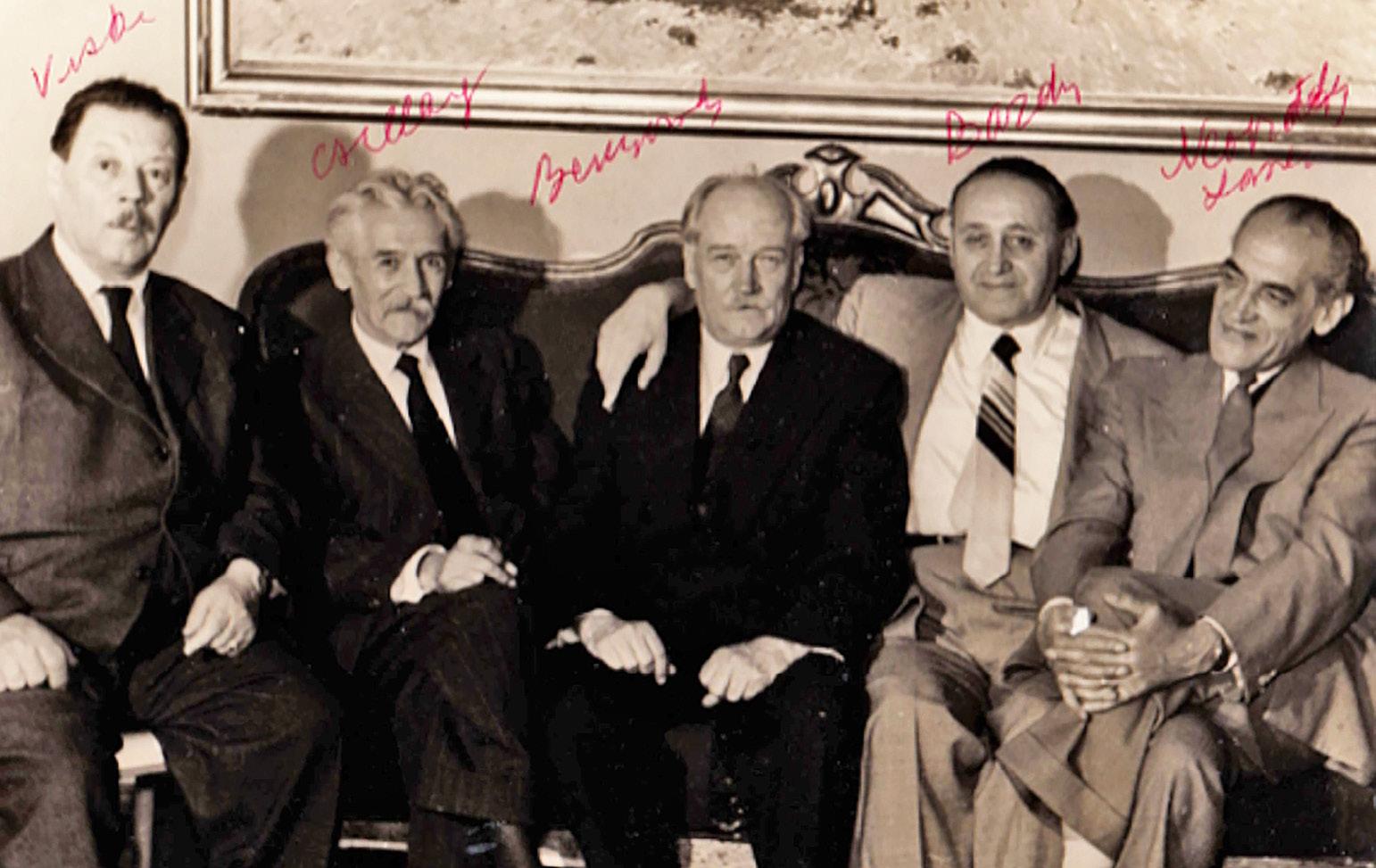
Schwartz adds that the pieces are also “very affordable and available at auction at their actual fair market value, with no middleman costs or retail overhead.” He believes the internet is accelerating Hungarian art’s muchdeserved recognition.
Sophisticated Collectors
“There’s a new, technologically sophisticated collector in today’s art world, and they’ve eagerly welcomed new tools to help them collect more efficiently. Collectors have become more comfortable and confident buying fine art through secure online resources. The result of all this on a global level includes unlimited art exposure opportunities with more individuals, from all income brackets, investing in Hungarian fine art,” Schwartz says.
He insists Hungarian art lacks nothing compared to what he calls “A-list Western European art” except in terms of cost, with the latter’s “huge prices and volatility.”
“For decades, Hungary’s masterpieces were isolated behind the Iron Curtain and under the cultural radar of the West. Astute Hungarian collectors and the general public are rediscovering Hungary’s masterworks after decades of isolation. Today, discerning art lovers consider these works highly collectible.”
“Collectors are now focusing on the skill, technique and high quality of the art in this recognized asset class. They esteem the affordability and potential for high long-term appreciation of these works,” says Schwartz.
He argues Hungary’s modern and classical paintings represent a valuable opportunity and something of a safe haven in increasingly volatile and uncertain economic times.
“With a war in Ukraine, a looming recession and high inflation’s loss of purchasing power, investmentgrade Hungarian art now represents an important hedge against growing economic and geopolitical risk,” he says.
“Beyond their pure aesthetic enjoyment, fine art as an asset class has an extremely low correlation with stocks, bonds and real estate in a financial crisis. As a result, Hungarian masterworks have uniquely preserved their power and enduring value over many decades, Schwartz adds.
22 | 4 Socialite www.bbj.hu Budapest Business Journal | June 16 – June 29, 2023
BBJ STAFF
Group photo of Thibaud Bárdy (second from right) with (left to right) János Viski, József Csillag, István Benyovszky, and László Neogrády.
Thibaud Bárdy (right) with the artist Pál Molnár-C (1894-1981)
Chamber of Commerce Corner
Canadian Chamber of Commerce in Hungary (CCCH)
The Öbölház restaurant provided the perfect backdrop for this special occasion. Nestled in a charming location, the venue exuded warmth and sophistication, creating an inviting atmosphere for all attendees. The sprawling terrace offered a breathtaking view.

The CCCH would like to thank everyone who attended the Canadian Bison & Salmon BBQ Dinner. Their enthusiasm and commitment to strengthening Canadian-Hungarian relations made the event a resounding success.
“It was heartwarming to witness the spirit of camaraderie and the shared appreciation for Canada’s vibrant culture. We extend our heartfelt appreciation to our sponsors for their generosity and support, without which this event would not have been possible,” a Canadian chamber spokesperson told the Budapest Business Journal

This regular section of the Budapest Business Journal features news and events from various international business chambers. For further information and to register for specific events, visit the website of the organizing chamber. If you have information for inclusion on this page, send an email in English to Annamária Bálint at annamaria.balint@bbj.hu
The German-Hungarian Chamber of Commerce (DUIHK)
The CCCH recently hosted its highly anticipated 10th Canadian Bison & Salmon BBQ Dinner at the picturesque Öbölház restaurant. The event was an exquisite showcase of Canadian culinary delights, accompanied by live jazz music, a thrilling raffle with incredible prizes from generous sponsors, and, most importantly, a gathering of like-minded individuals dedicated to fostering bilateral relations between Canada and Hungary.
Swiss-Hungarian Chamber of Commerce (Swisscham)
The next online event of Swisscham will be CEE Swiss Impulse Session called How businesses should use AI / ChatGPT run by its partners, the Chamber of Commerce Switzerland Central Europe (SEC) and the regional Swiss Chambers. AI evangelist Malcolm Werchota will outline what AI is good for and how businesses should use it now. Participants will hear about the latest advancements in generative AI, practical applications in commerce and networking and learn about valuable resources and tools. Werchota has been recently working for Novartis globally, helping them decide how they should use AI in their daily work. He is also the co-owner of an AI start-up in Barcelona and has recently been very active in coaching various businesses on this subject. The online session will run from 11-11:45 on Tuesday, June 20, but online prior registration is required via the Swisscham website. Swisscham launched a new HR event on June 7 with coach Balázs Vaszkun. This two-hour special business training aimed to discover the less conscious dimensions of communication, develop adaptability, and accept mistakes for the sake of development. The training method is based on physical experience, with easy-to-learn selfdefense situations reworked into a business, meta-communication context. The participants had an intensive lesson and also gained some helpful take aways for the future, Swisscham says.
“Whether you’re a Canadian expatriate, a Hungarian business professional with an interest in Canada, or simply someone who appreciates international connections, our events offer a unique platform to network, learn, and forge meaningful relationships. We promise an array of exciting experiences that will showcase the best of Canada’s cultural diversity while also creating opportunities for collaboration and business growth,” the spokesperson added.
The Netherlands-Hungarian Chamber of Commerce (Dutcham)
The recent Dutcham event on the business benefits of Cultural Diversity hosted by ING Bank and supported by the Netherlands Embassy covered various corporate challenges and best practices. This topic is especially relevant for Dutcham, a vibrant business community that “melts” cultures. We were interested to learn how a company can benefit from encouraging an open, inclusive culture where differences are appreciated. For a full report, see “Dutcham Embracing the Business Benefits of Cultural Diversity,” page 10.
Belgian Business Club in Hungary (Belgabiz)
Belgabiz held a Family Day at Budapest Garden on June 10, where members were invited together with their families. Various sporty activities and entertainment for all ages awaitedthe numerous guests. This was also the occasion to say farewell to departing Belgian Ambassador to Hungary Siegfried Peinen, who has been a dedicated club member as its honorary chairman since 2019. “Belgabiz is grateful to the ambassador for contributing to its success over the years and wishes him good luck for all his future endeavors,” a spokesperson told the BBJ
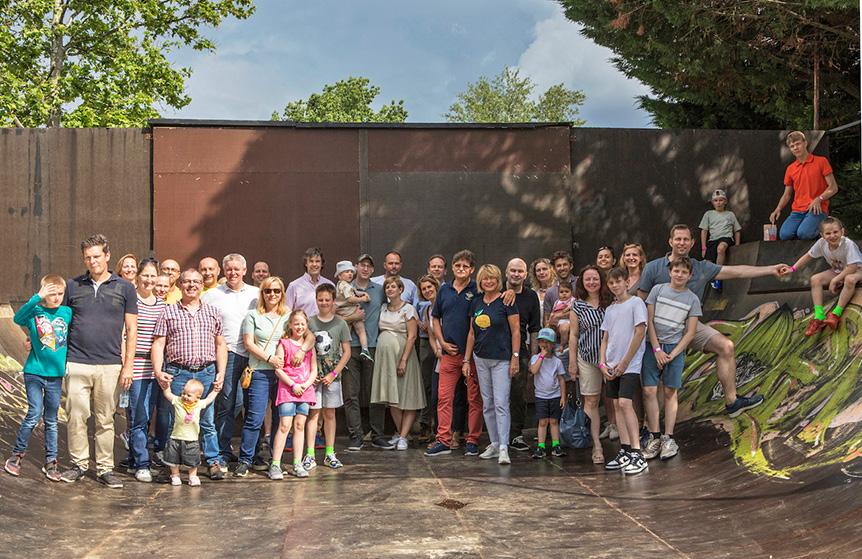
The German-Hungarian Chamber of Industry and Commerce (DUIHK) celebrated its 30th anniversary with a gala evening on Friday evening at the Marriott Hotel. The 400 guests could not only look back on three decades of German-Hungarian economic relations but also enjoy a party with dancing, bars and entertainment. High-level guests included Hungary’s President Katalin Novák, the Minister of the Prime Minister’s Office Gergely Gulyás, the Ambassadors of Hungary, Germany and Austria (Péter Györkös, Julia Gross and Alexander Grubmayr, respectively), the Vice President of the German Chamber of Industry and Commerce (DIHK), Kirsten Schoder-Steinmüller, and the Head of Foreign Trade, Volker Treier. For a full report, see “DUIHK 30th Anniversary Gala with President of Hungary and 400 Guests,” page 11.
British Chamber of Commerce in Hungary (BCCH)
The BCCH will be holding its Ascot at Hilton event on June 24. Thanks to generous sponsors Perisia Consulting, Antempus, AACM Central Europe and the British Council Hungary, BCCH says everything is almost ready. It promises a program that “is going to be nothing short of amazing and quite packed, including a gorgeous hat fashion show, courtesy of Hajnalka Tórizs Head Couture, and a charity betting competition for unique prizes including multiple hotel stays, with all proceeds going to charity. The chamber also promises “ample amounts of the quintessential British Summer favorite Pimm’s.” The United Kingdom’s Ambassador to Hungary, Paul Fox, will be the guest of honor. To recreate the Ascot atmosphere, guests are asked to come dressed as if they were attending the race in person.

4 Socialite | 23 www.bbj.hu Budapest Business Journal | June 16 – June 29, 2023
Photo by Pelsőczy / DUIHK

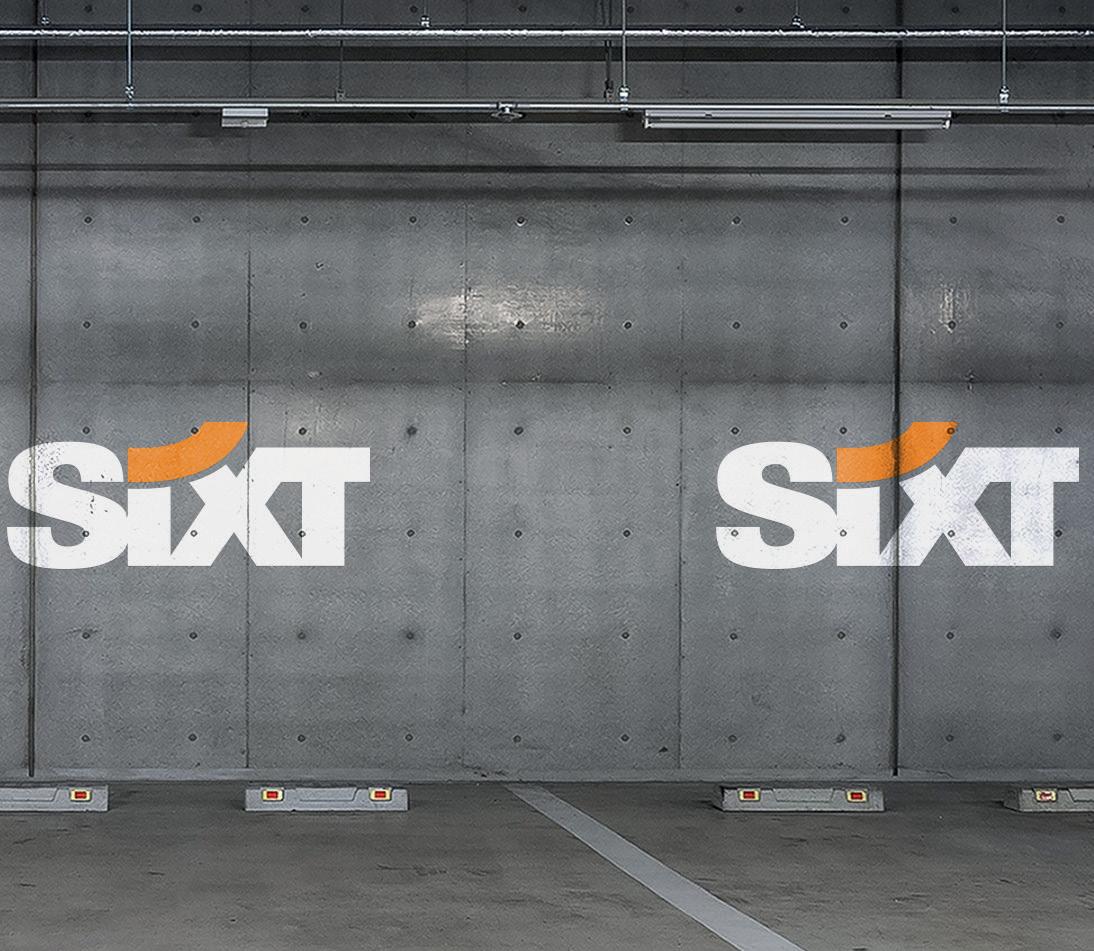

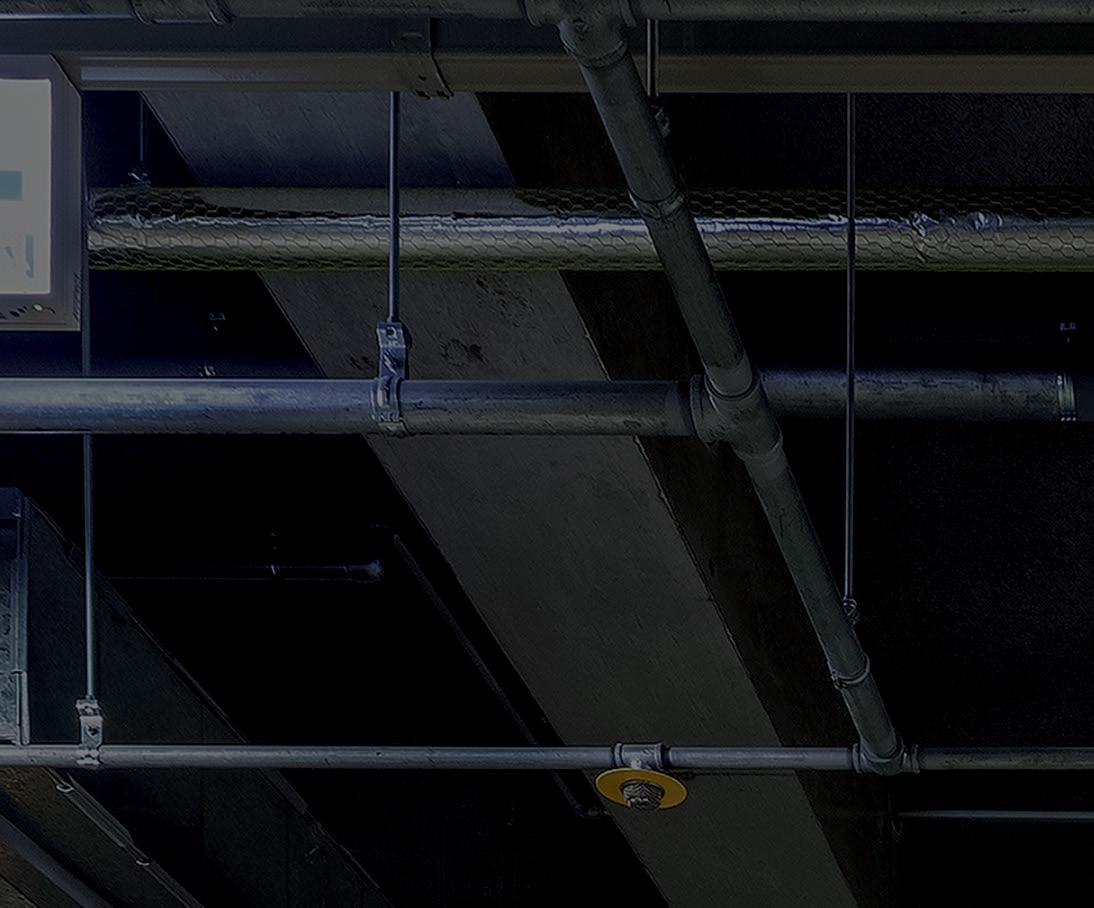
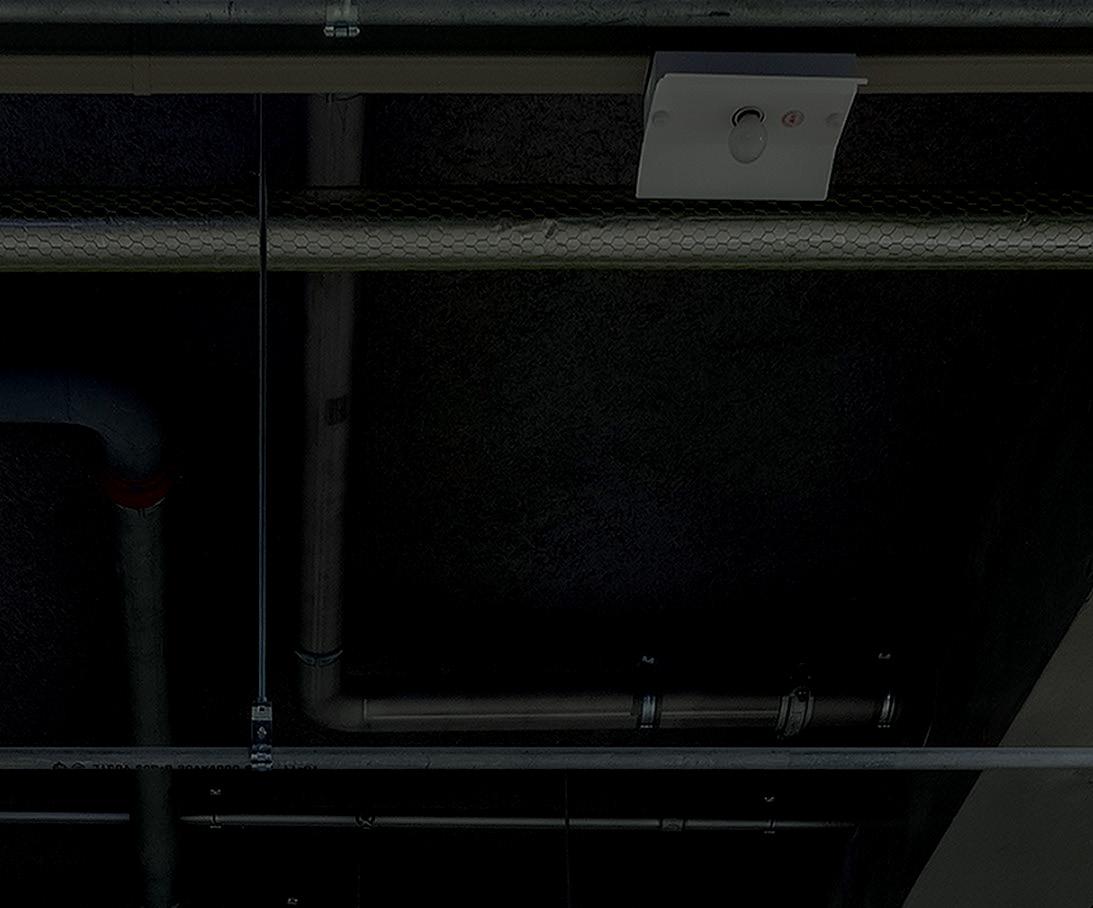






www.sixtbusiness.hu Choose your car NOW! Take it IMMEDIATELY! sixt.hu Leave parking! Business must drive on! Is there to much wait for your new company car? Let us show you the workaround: Sixt business company car offers 40 models in more than 30 categories, custom solutions, tailored for you.



























































